Introduction
Welcome, everybody, to this new Flight-report! In this review, I will be taking you along with me to fly with China Eastern in economy class on the Airbus A350-900 from Shanghai Pudong (浦东) to Singapore.
This review will cover the airport experiences in Shanghai Pudong and Singapore, as well as the onboard hard and soft products.
For each aspect of the experience, I will rate it on a scale of 1 to 10. The final score for the full experience is out of 100.
Booking the flight
This is the inbound flight after an almost-two-week trip in China. The review of the outbound flight MU546, is out already, and includes more detail about the booking process, so be sure to check that out too. I booked the return tickets for around CNY3200/EUR410.
At the time of booking (July 2023), the aircraft scheduled to operate this (and the outbound) flights was actually the (much inferior) Airbus A330-200. However, a couple months before each flight, the aircraft was changed to the Boeing 787-9 for the outbound, and the Airbus A350-900 for this flight. This was a massive score in my opinion, the hard products on these newer jets are far superior to the old products found on the A330s. Do note that China Eastern voids all previous seat selections upon aircraft changes, so do make sure to constantly check the booking for equipment changes so you do not lose your seat. In my case, my chosen seat was 68A.
Expectations
While China Eastern is not known to be a very luxurious or a high-quality airline or any sorts, I still expected a pleasant experience with an excellent hard product on such a new aircraft, as well as good food and service. Since this flight was operating out of China Eastern’s hub of Shanghai Pudong, I was also hoping for this flight to either match or better my outbound flight from Singapore with subsidiary Shanghai Airlines.
Departure airport - Shanghai PVG
Transport to/from the Airport
Shanghai Pudong International Airport, located 30km from the city centre, is the primary international airport that serves the Shanghai area, with the other being Hongqiao. Despite its distance, it is fairly well linked with the city. Passengers could take the line 2 of Shanghai’s metro network, which connects the entire city. Various shuttle buses also run between the airport and significant places in Shanghai such as the Shanghai Railway Station. On top of that, the world-famous Shanghai Maglev runs between the airport and Longyang Road, which is also a busy area, and well connected to the central business district. I chose the maglev as it reduces travel time by around 20 minutes compared to using the metro.
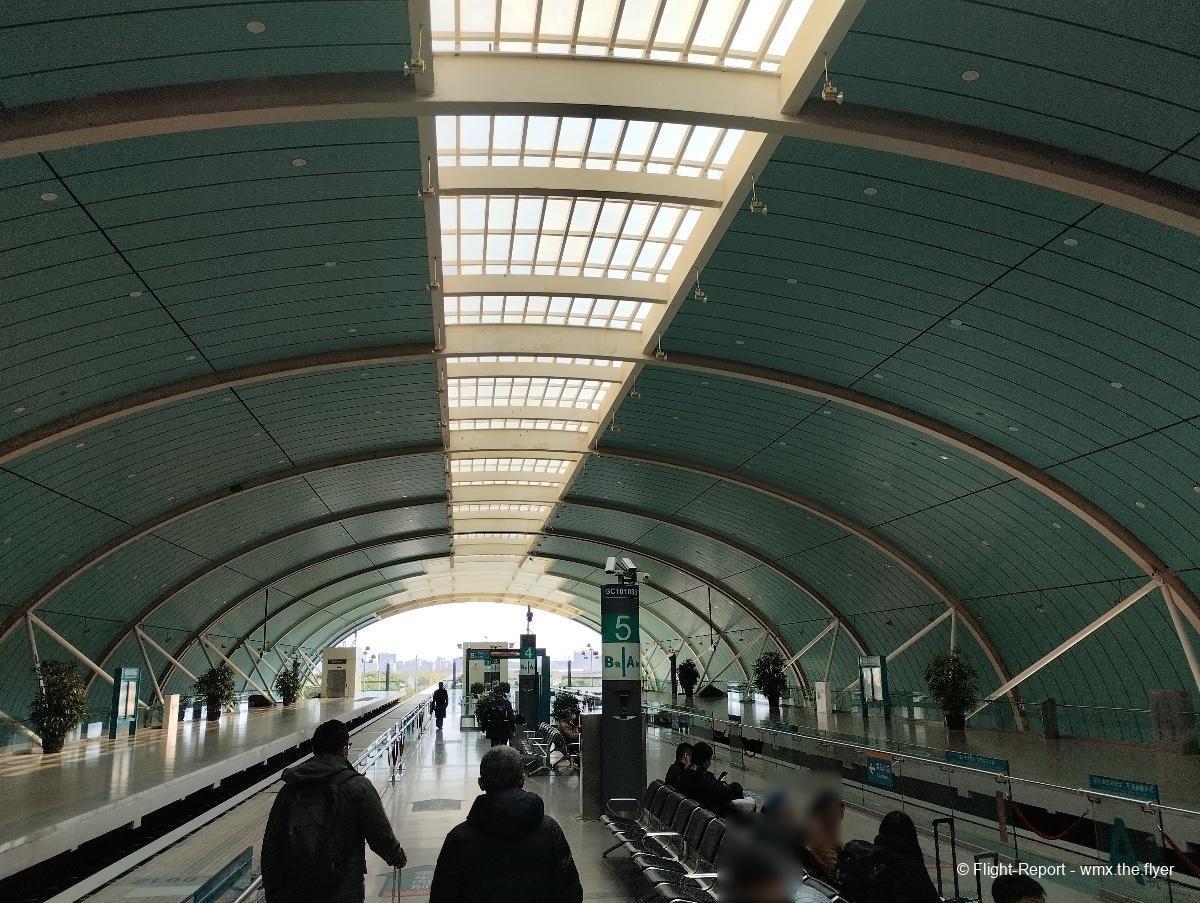
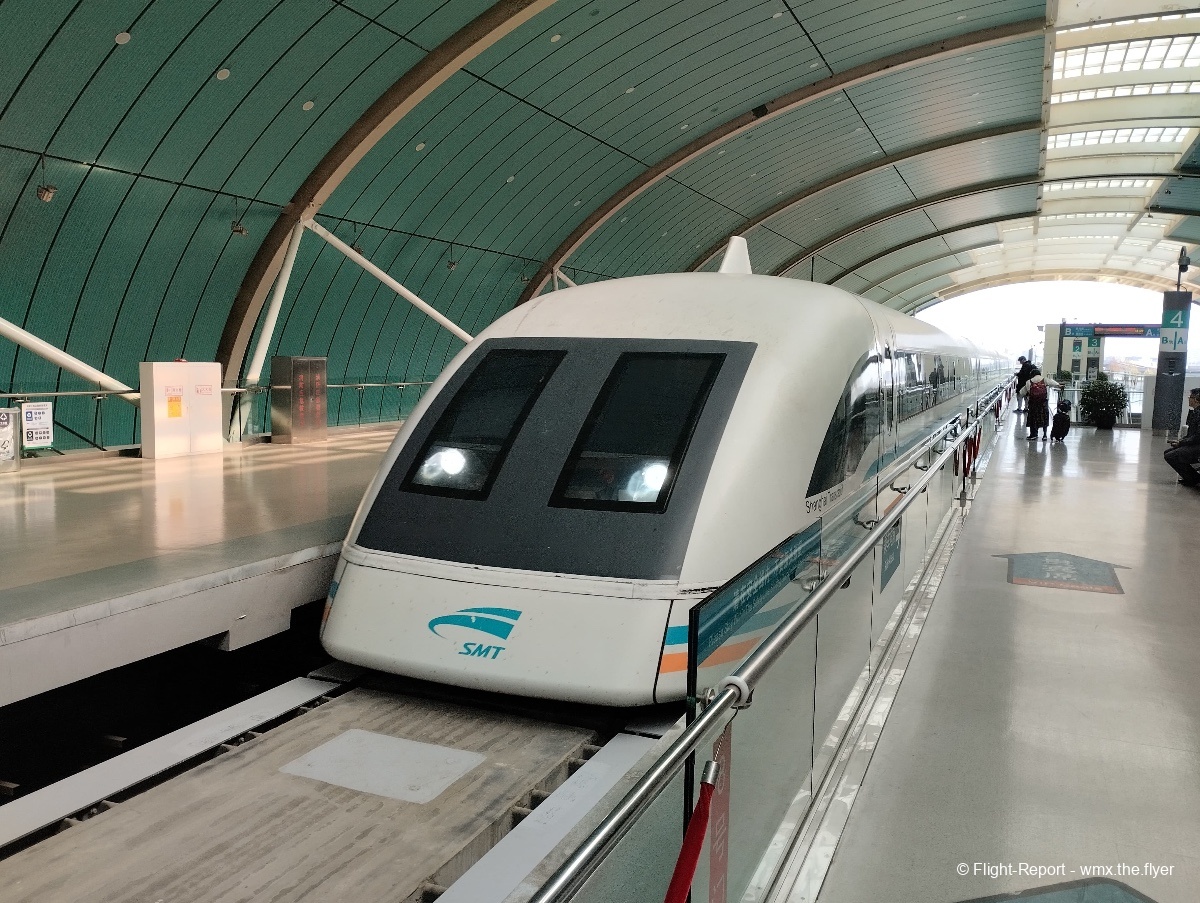
A brief 6 minutes later, the maglev train pulls up into the airport, around 2 and a half hours before scheduled departure time.
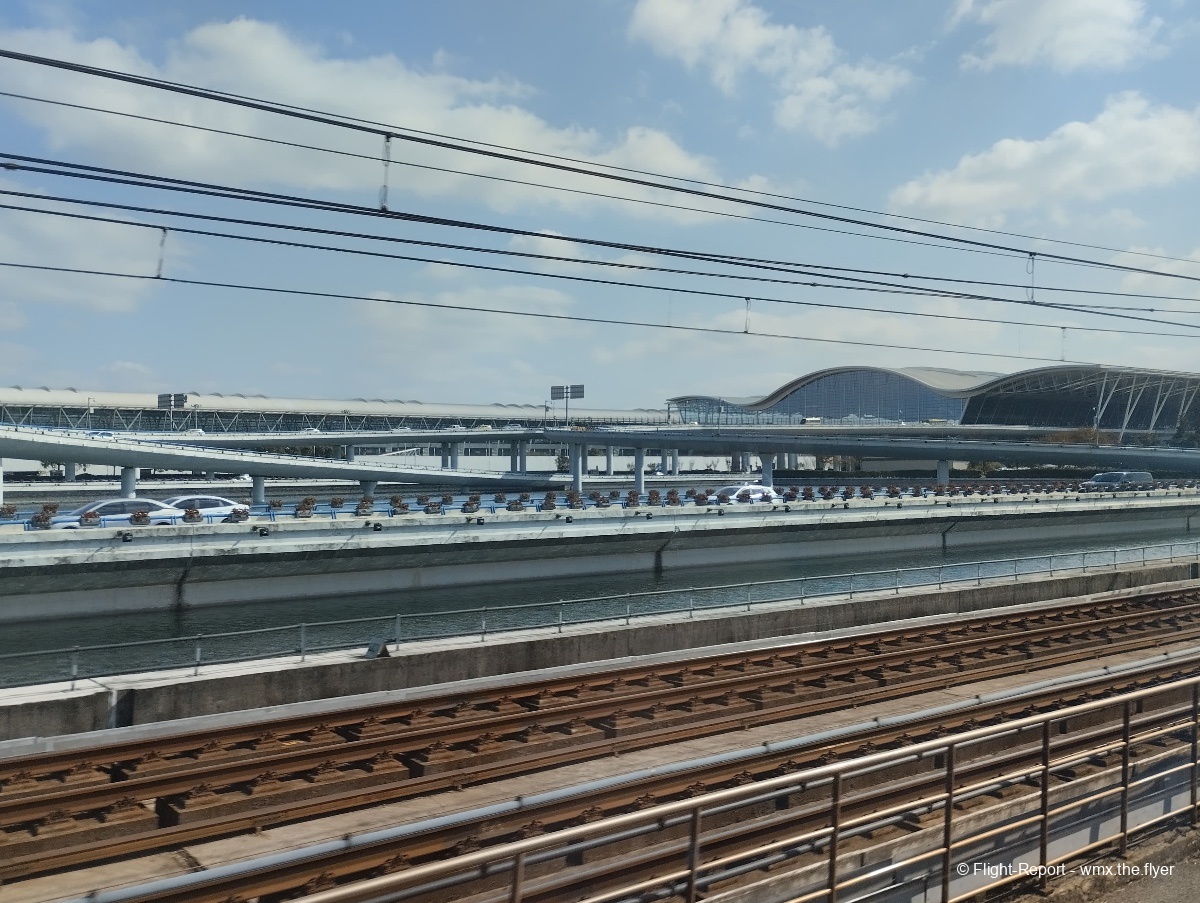
History and Current Operations at the Airport
Construction of Shanghai Pudong Airport began in 1997, and it officially opened on October 1, 1999, to alleviate congestion at Shanghai Hongqiao International Airport. Over the years, Pudong Airport has undergone significant expansion and development to handle the increasing passenger and cargo traffic. The airport initially had two terminals, T1 and T2. Terminal 1 primarily served international flights, while Terminal 2 catered to domestic flights. In 2019, Terminal 1 underwent renovations to improve facilities and services. In 2021, the airport opened its new Satellite Terminal, S1, connected to Terminal 1 via an underground automated people mover (APM) system, significantly increasing its capacity. Shanghai Pudong has 2 operating runways, 16L/34R and 17R/35L. Shanghai Pudong Airport is one of the busiest airports in China, serving as a major international gateway. It handles a large volume of both domestic and international passengers annually, with the numbers peaking at 76200000 in 2019, making it the 8th busiest in the world that year. It is also a crucial hub for air cargo, with extensive facilities for freight handling. The airport plays a vital role in supporting Shanghai's position as a global financial and trade center. Pudong Airport serves as a hub for several Chinese airlines, including China Eastern Airlines and Shanghai Airlines, offering flights to numerous domestic and international destinations.
Check-in
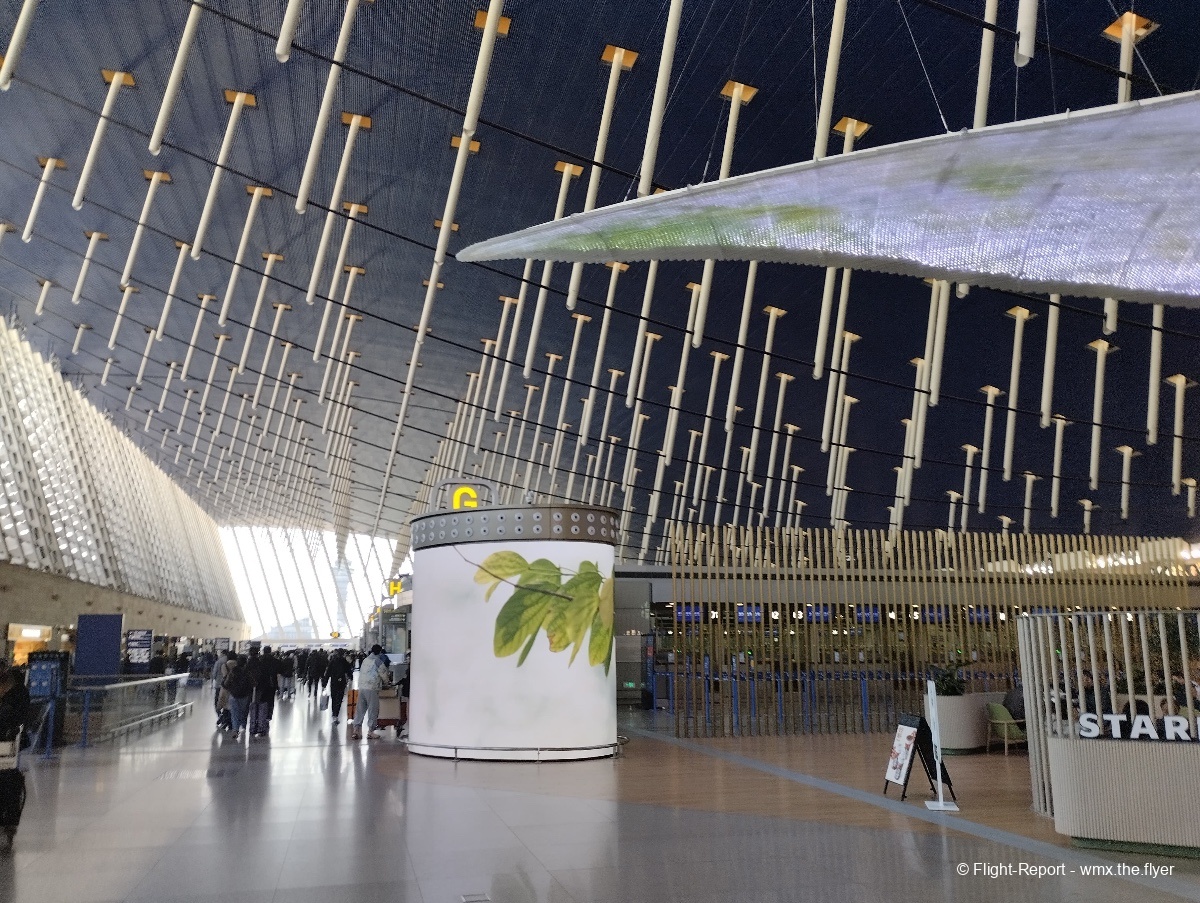
I reach the check-in area after a short walk and found the queue to the China Eastern flights bound for Singapore. Out of the 4 daily China Eastern flights operating between Shanghai Pudong and Singapore, 2 of them (MU545/544 and MU565/566) operate at similar hours out of Shanghai. As such, the check-in queue was quite long, and took over 20 minutes. When it finally came to my turn, a slight issue was brought up. Apparently, for China Eastern flights operating out of Shanghai, even backpacks that can fit into the seat in front, are considered carry-on items. Although I had planned to bring my roller suitcase onboard, I was forced to check that in. My backpack was given an ‘approved carry-on’ tag
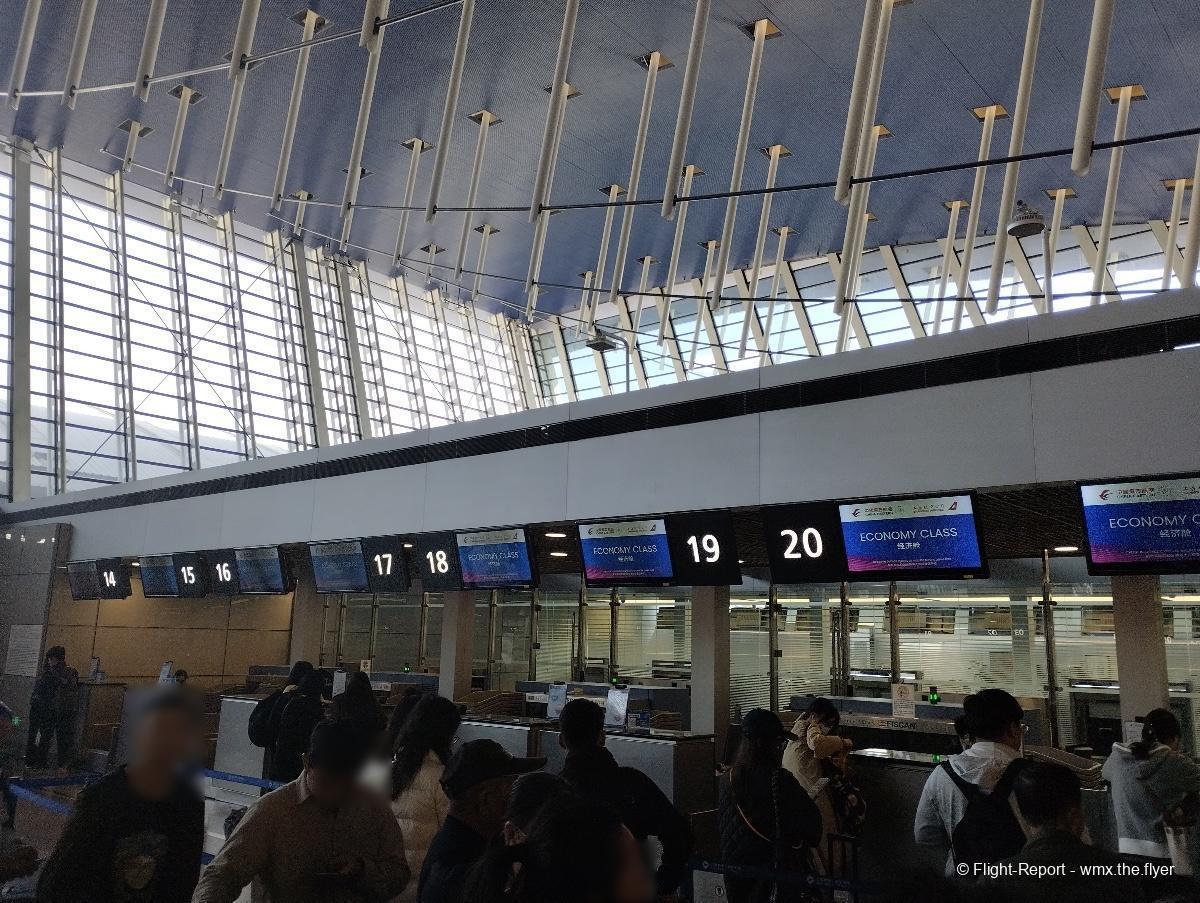
Immigration
The queues at immigration were quite short, and the flow was quite smooth. The immigration officer I was assigned to was friendly, and let me through without much hesitation.
Security
Right after was the security checkpoint. No issues arose here, and I was through in no time. The officers here were well mannered.
Airside
Like the check-in area, the departures concourse airside had plenty of natural light, thanks to the massive windows. Here, there are also many duty-free shops, selling alcohol, luxury items, and travel essentials.

Gate Area
Despite the aforementioned large windows, though, the views of the apron were not that great, unfortunately. This would be because of the way many Pudong Airport was designed, where the departures level does not directly connect to the windows, instead leaving a ledge by the side where escalators can connect this floor to the level where the jet bridges are. Hence you would only get decent views of the aircraft just prior to boarding.
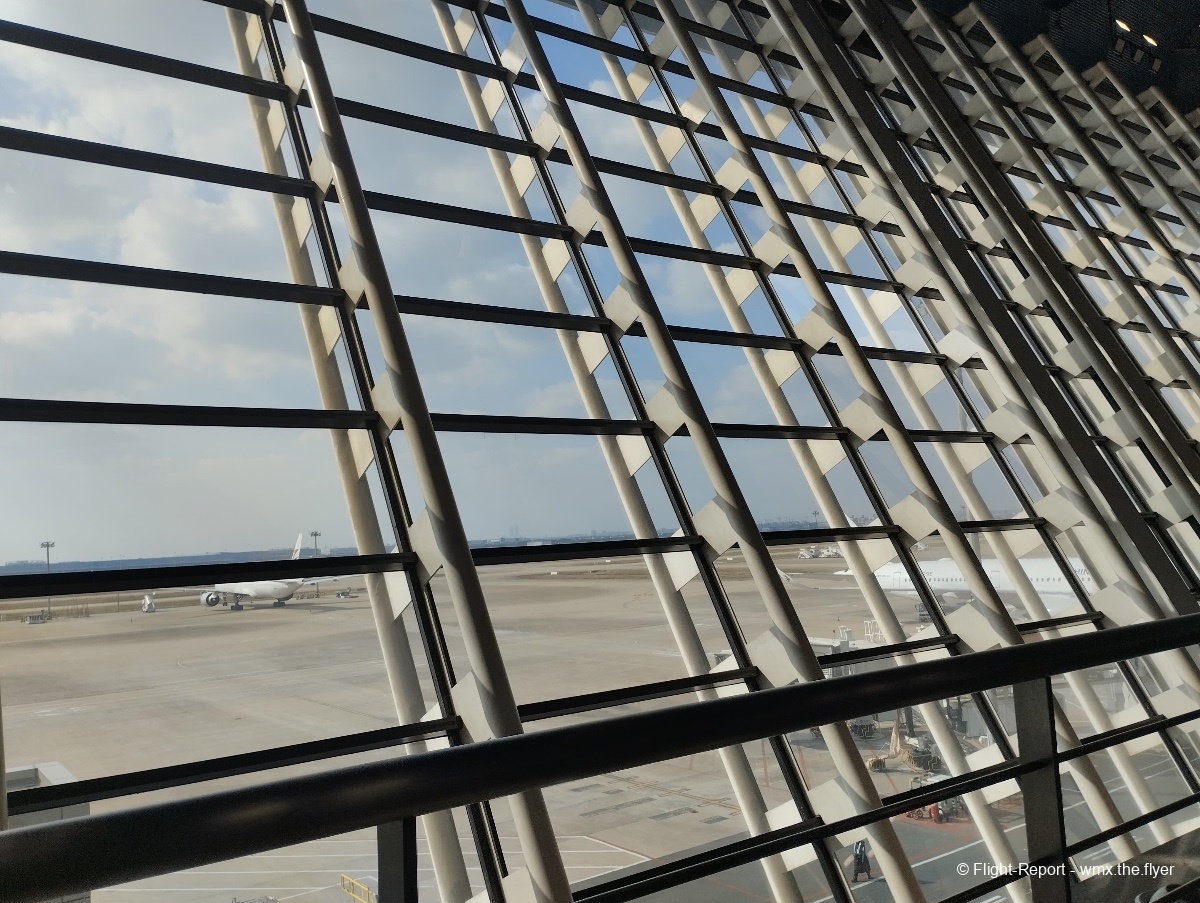
The gate area itself at gate 16 had plenty of seating, and even featured a water dispenser, which serves hot and cold water into the provided paper cones. This is a really nice feature for people to hydrate, especially after security checks where no water would be allowed in.
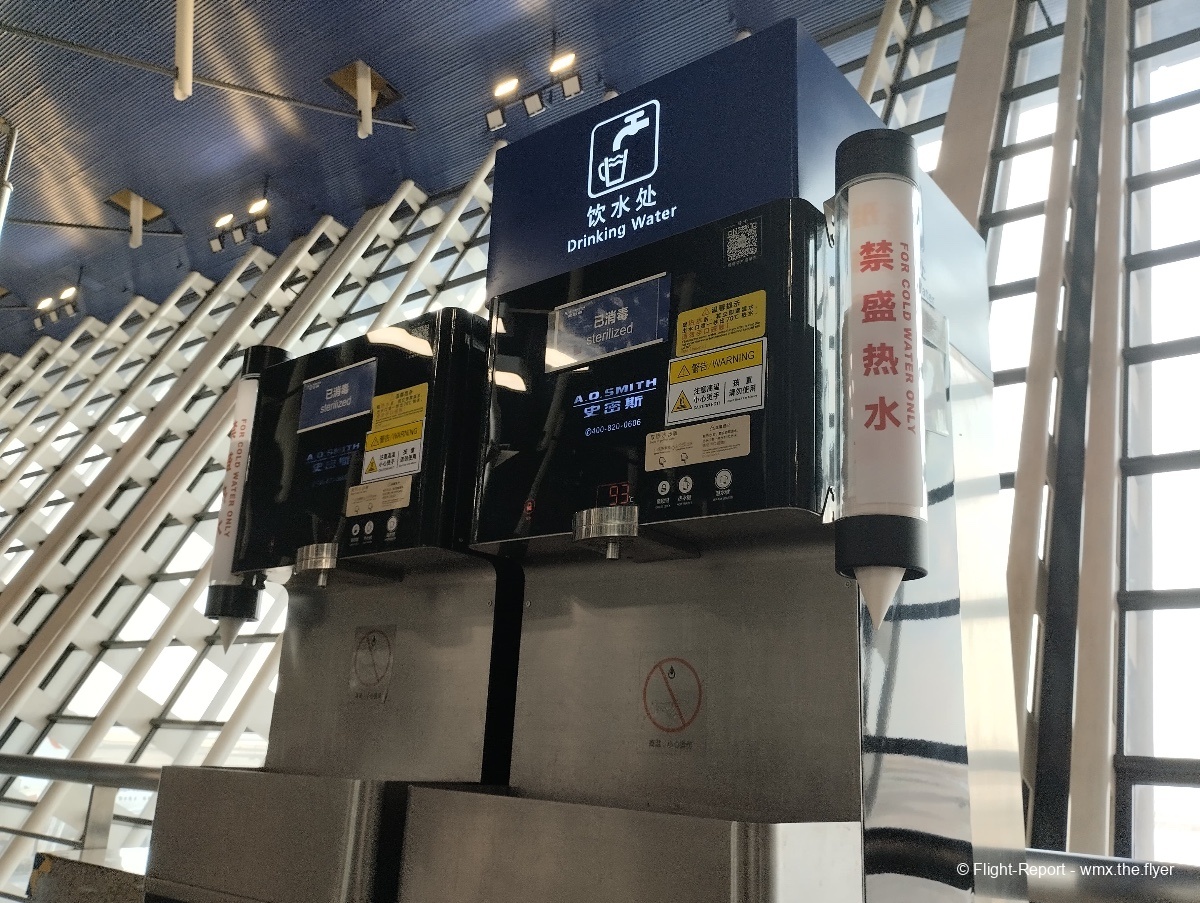
DEPARTURE AIRPORT SCORES: 7/10
Flight and aircraft information
Flight Information
Flight date: 24/11/2023
Airline: China Eastern (中国东方航空) (MU/CES)*
Operated by: China Eastern (中国东方航空) (MU/CES)
Flight number: MU565
Route: Shanghai Pudong (PVG) – Singapore (SIN)
Scheduled Departure Time: 14:35 (UTC+8)
Actual Departure Time: 14:52 (UTC+8)
Scheduled Arrival Time: 20:25 (UTC+8)
Actual Arrival Time: 19:59 (UTC+8)
Scheduled Flight Time: 5h50min
Actual Flight Time: 5h08min
Aircraft Information
Aircraft Registration: B-329E
Aircraft Type: Airbus A350-941
Engines: 2× RR Trent XWB-84
Line Number: 505
First Flight: 05/10/2021
Aircraft Age (as of flight): 2 years 1 month
Aircraft Delivered: 16/07/2021
Seating Configuration: F4J26W28Y227 **
Aircraft Livery: China Eastern 2014 ***
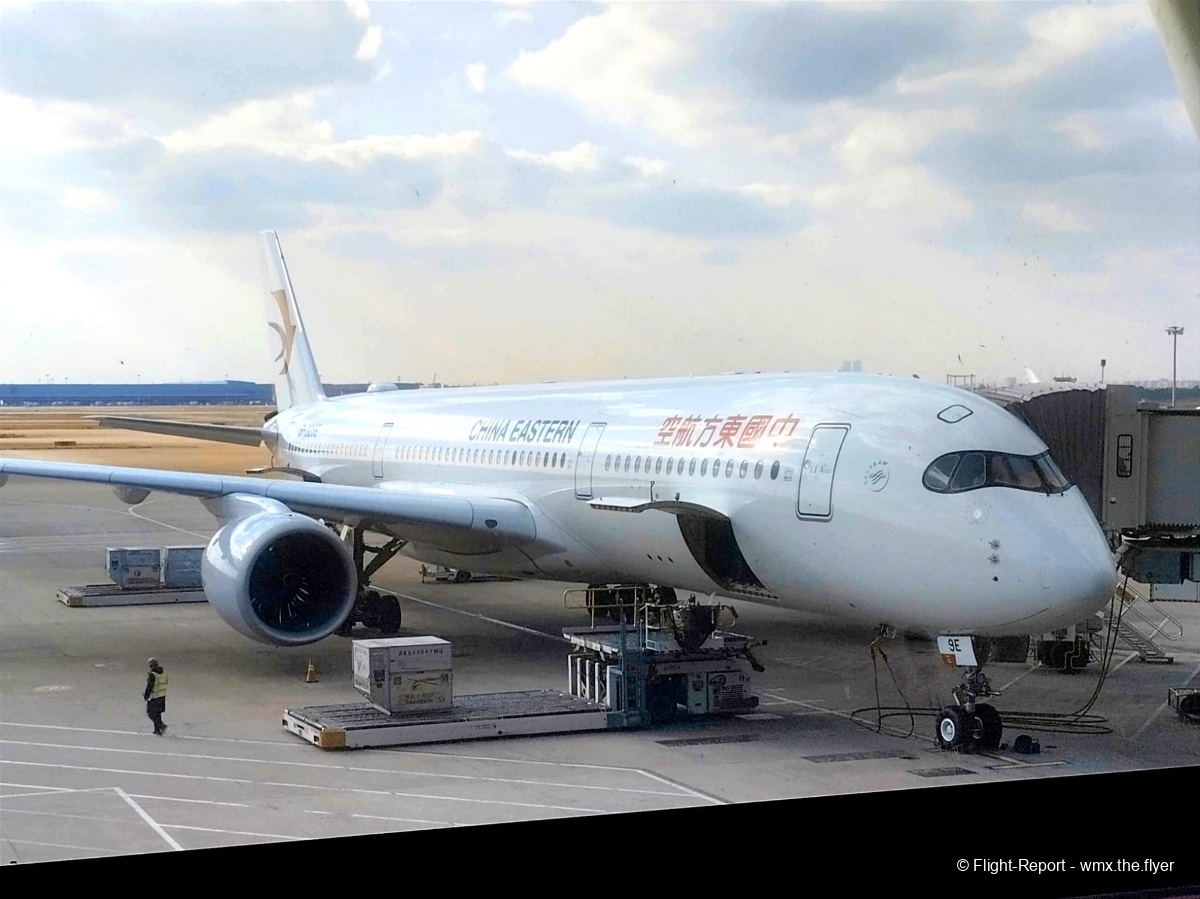
*China Eastern Airlines, established in 1988, is one of China's major airlines with its headquarters in Shanghai. However, its roots trace back to the 1950s when it operated as the Civil Aviation Administration of China (CAAC). It was later restructured and divided into six regional airlines, one of which was China Eastern Airlines. During its early years, China Eastern focused on domestic flights, gradually expanding its network to cover major cities in China. In the late 1990s and early 2000s, the airline underwent significant modernization and fleet expansion, acquiring new aircraft to enhance its services and meet the growing demand for air travel in China. Nowadays, with its fleet of 623 aircraft, it is the country’s second largest airline, behind Guangzhou-based China Southern. The airline is a member of the SkyTeam alliance.
**The 4 ‘first class’ seats are more like a ‘business plus’ product, being at the bulkhead and hence first row of the main business class cabin and using the same Thompson Aerospace Vantage XL seats as the rest of business class, but with much larger footwells and IFE screens. Passengers in those seats often pay a significantly higher fee but receive the same business class service. In China Eastern’s fleet of 20 A350-900s, all feature this same seating configuration.
***This has to be one of the laziest livery designs I have ever seen. Over a fully white fuselage, the airline’s name is written in a plain font in the airline’s colours in Chinese and English, and the airline’s logo on the tail. Unfortunately, gone are the days of the old livery featuring a beautiful cheat line of red, blue, and gold, featuring the iconic black spot on the radome.
Pre-departure
Boarding
Business class passengers and SkyTeam status holders were called to board first, followed by the economy passengers in groups according to rows. My group was called first because my row was towards the back, so I was among the first to board the aircraft.
Welcome Onboard
Once onboard the aircraft, two flight attendants stationed at door L2 warmly welcomed me onboard. The same three pieces of the boarding music was playing in the background as passengers filed into the cabin.
I turned right, and walked through the rear business class cabin, two rows of Thompson Vantage XL seats arranged in a staggered 1-2-1 configuration. These seats bear similarities to the Delta One Suites of fellow SkyTeam member Delta Airlines.

Next was the premium economy cabin, three rows of Thompson Aerospace MiQ seats arranged in a pretty standard 2-4-2 formation.
I then navigated through the forward economy cabin, where the seats are arranged in a 3-3-3 configuration, before finding my window seat, 68A, in the rear economy cabin.
Cabin + seat
Let’s take a look at China Eastern’s A350-900 economy class cabin and seats.
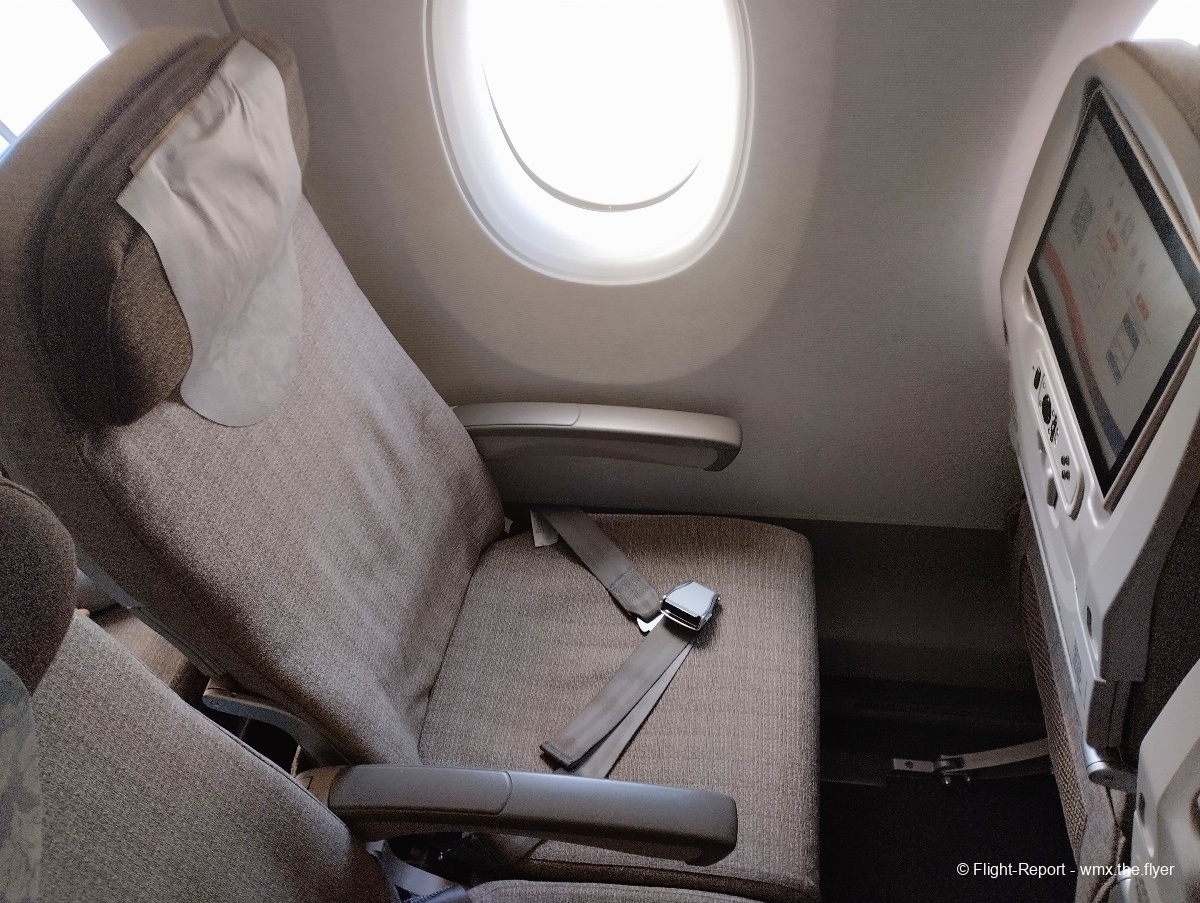
Seat Details:
Seat: 68A (Port-side window seat)
Seat Type: Slimline
Seat Model: Pinnacle
Seat Manufacturer: Collins Aerospace
Seat Pitch: 31”
Seat Width: 17.3”
Recline: 3”
Class: Economy (Y)
Cabin: Rear economy cabin (between doors 3 and 4)
Seating arrangement: 3-3-3
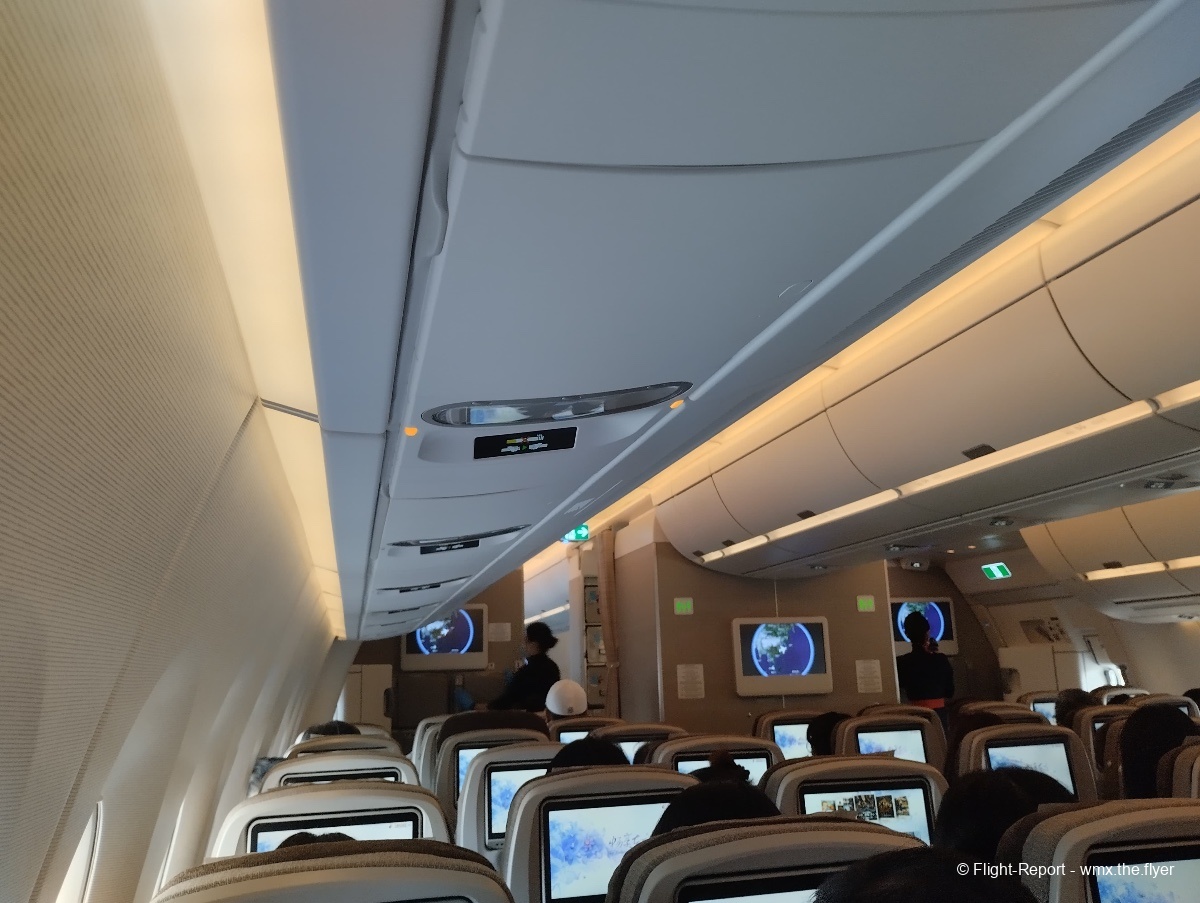
Features:
4-way adjustable headrest
Retractable bi-folding table

11.7” HD touchscreen IFE display
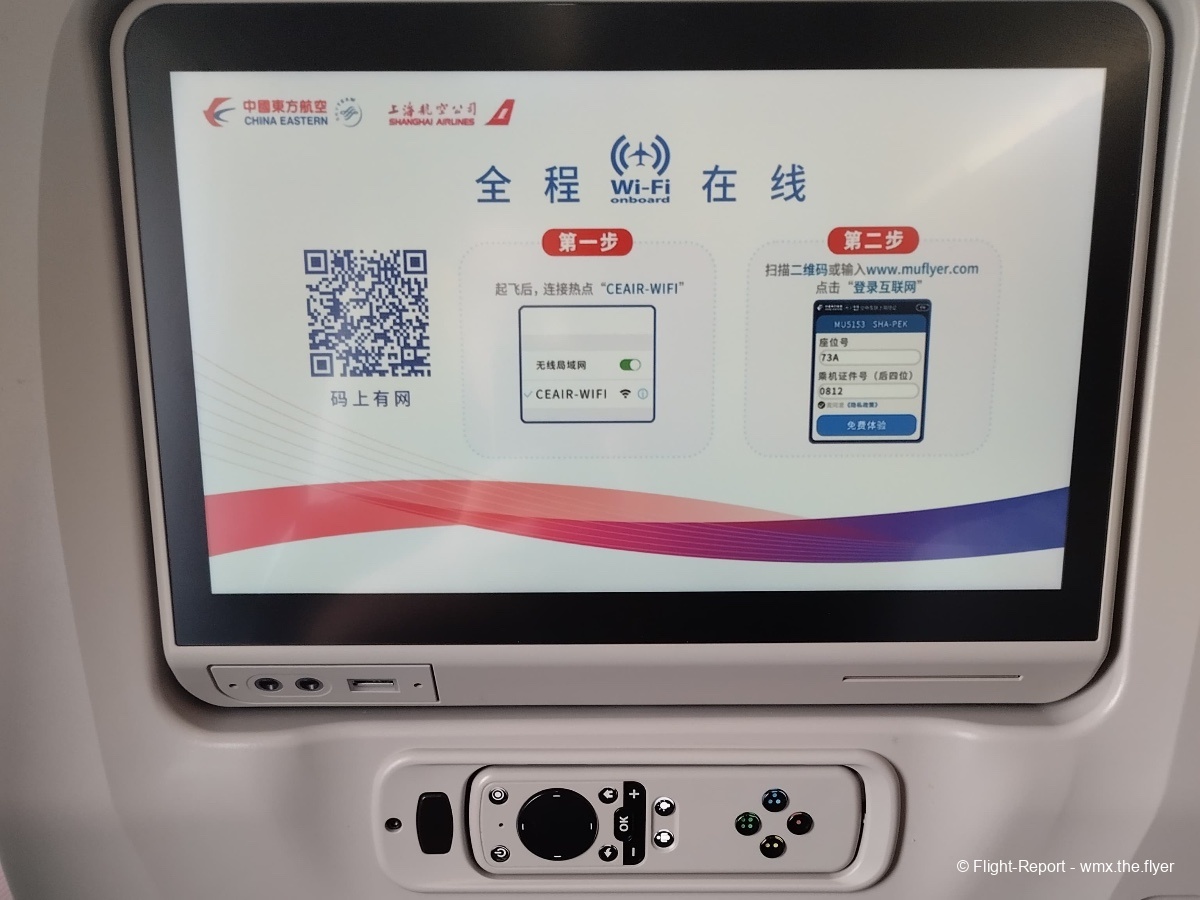
Universal Power Outlets
USB-A Sockets
Dual headphone jack
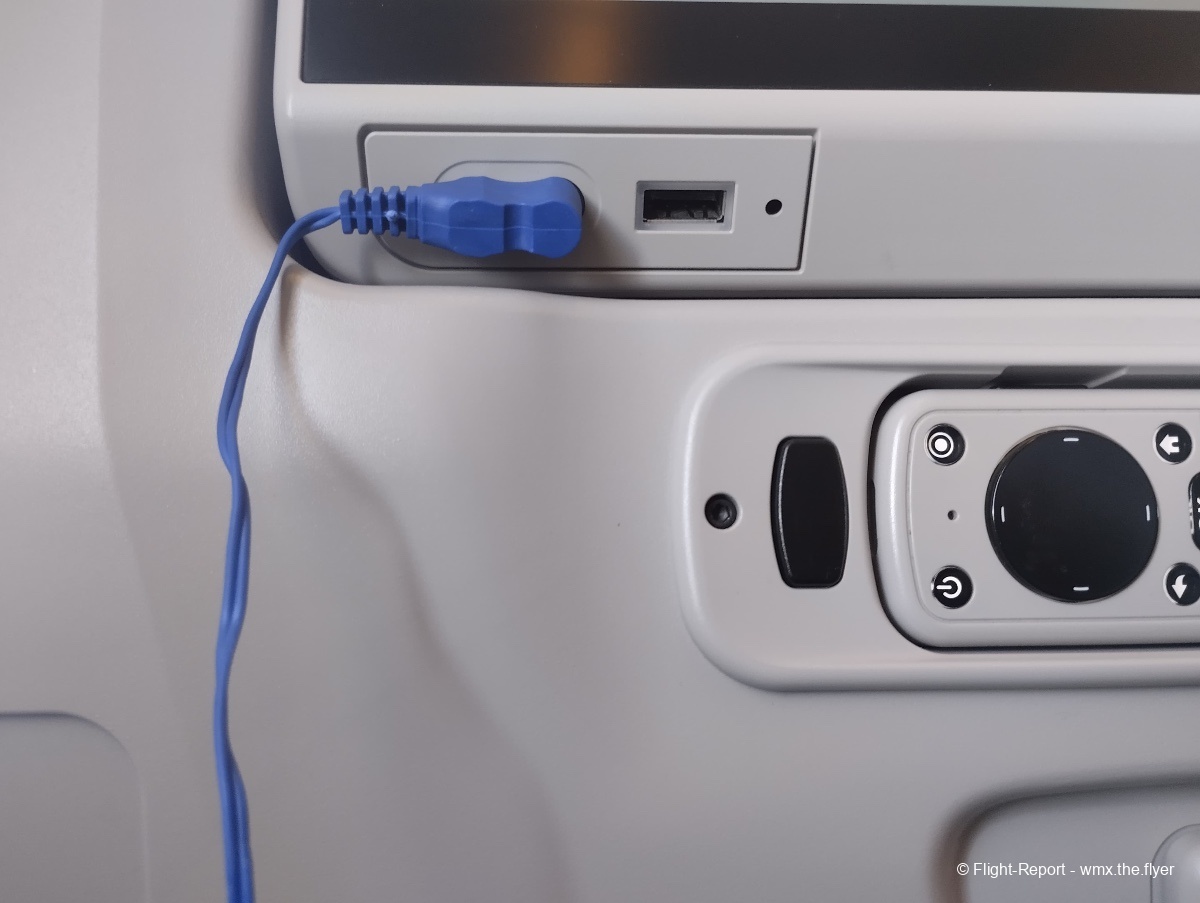
Coat hook
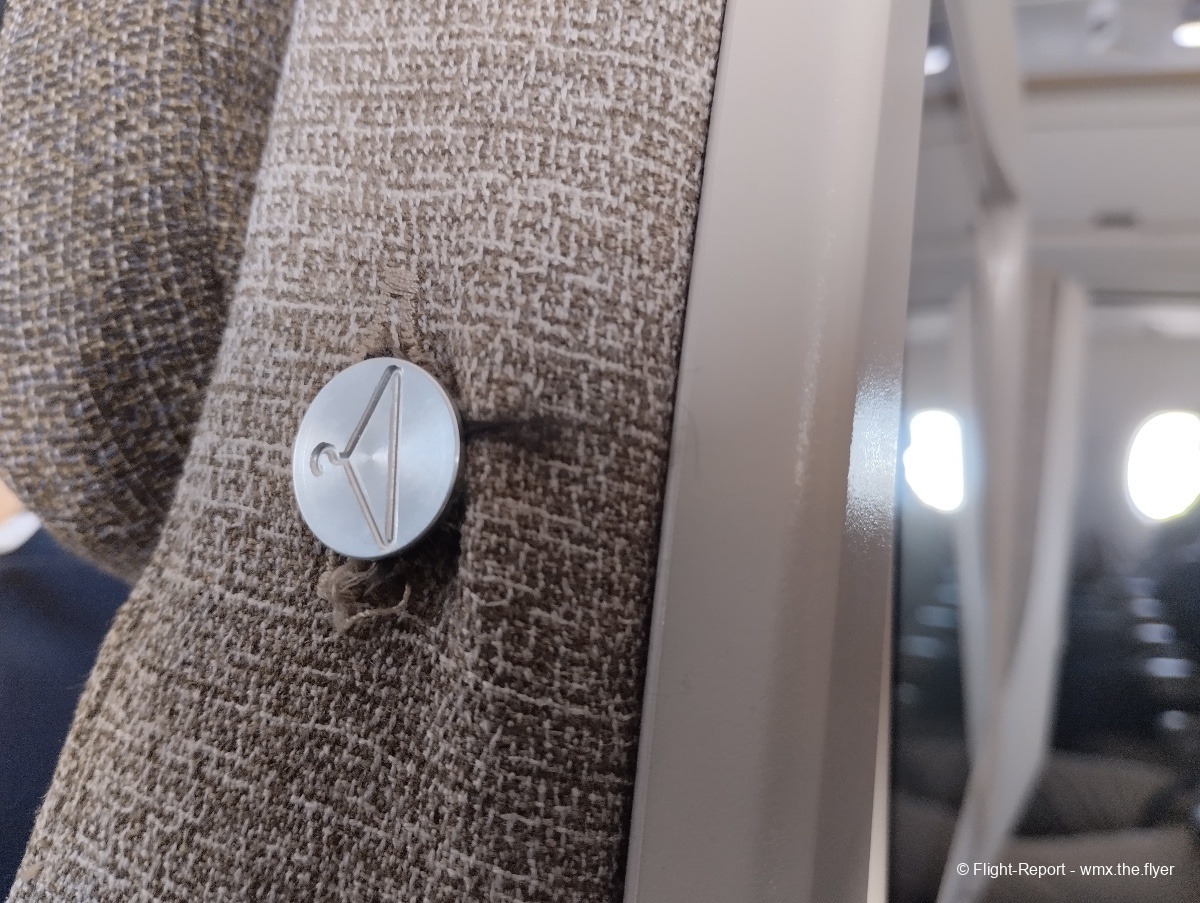
*No individual air nozzles were implemented on the aircraft, though that was no problem as a warm cabin was more than welcome to contrast the cold Shanghai winter outside the aircraft.
Some thoughts about the seat:
Seat Comfort: The seat was really well padded and very comfortable. Headrest provides a lot of support.
Legroom: The 31” seat pitch was good, and provided plenty of legroom for me to stretch my legs.
Seat Storage: There is a large seat-back pocket in front which is large enough for most personal items.
Recline: Pretty standard recline, though I did not quite make use of it for the majority of the flight since it was a daytime one.
THE CABIN + SEAT SCORE: 9/10
Taxi + takeoff
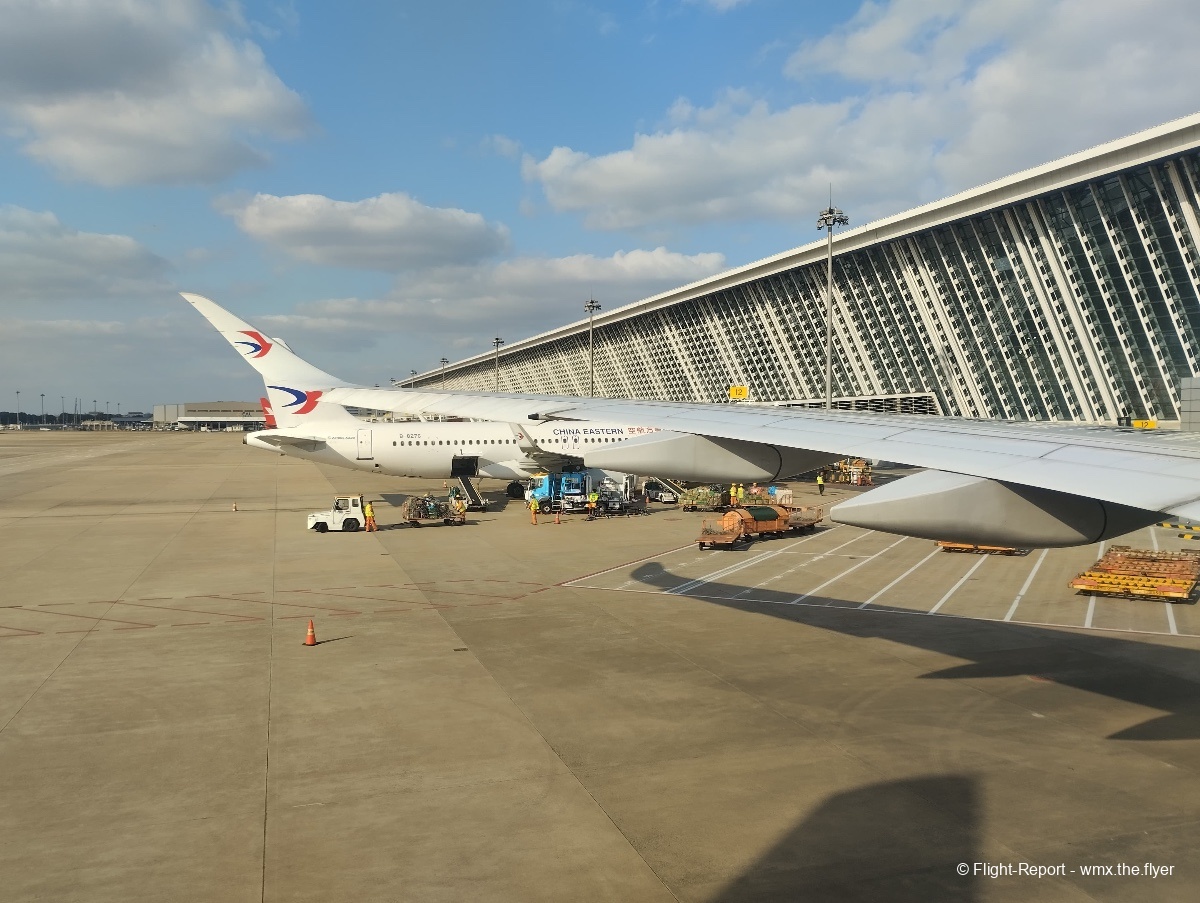
We pushed back soon and the safety video was shown. The safety video is cartoon based, featuring some pretty realistic animations of the aircraft and cabin. It ran at just the right tempo and does not have too many little details that draw passengers away from the important messages conveyed. It was quite demoralizing, however, when they playing the entire safety video for the second time, just like it did on my outbound flight… just how hard is it to put English subtitles over a Chinese-audio safety video?
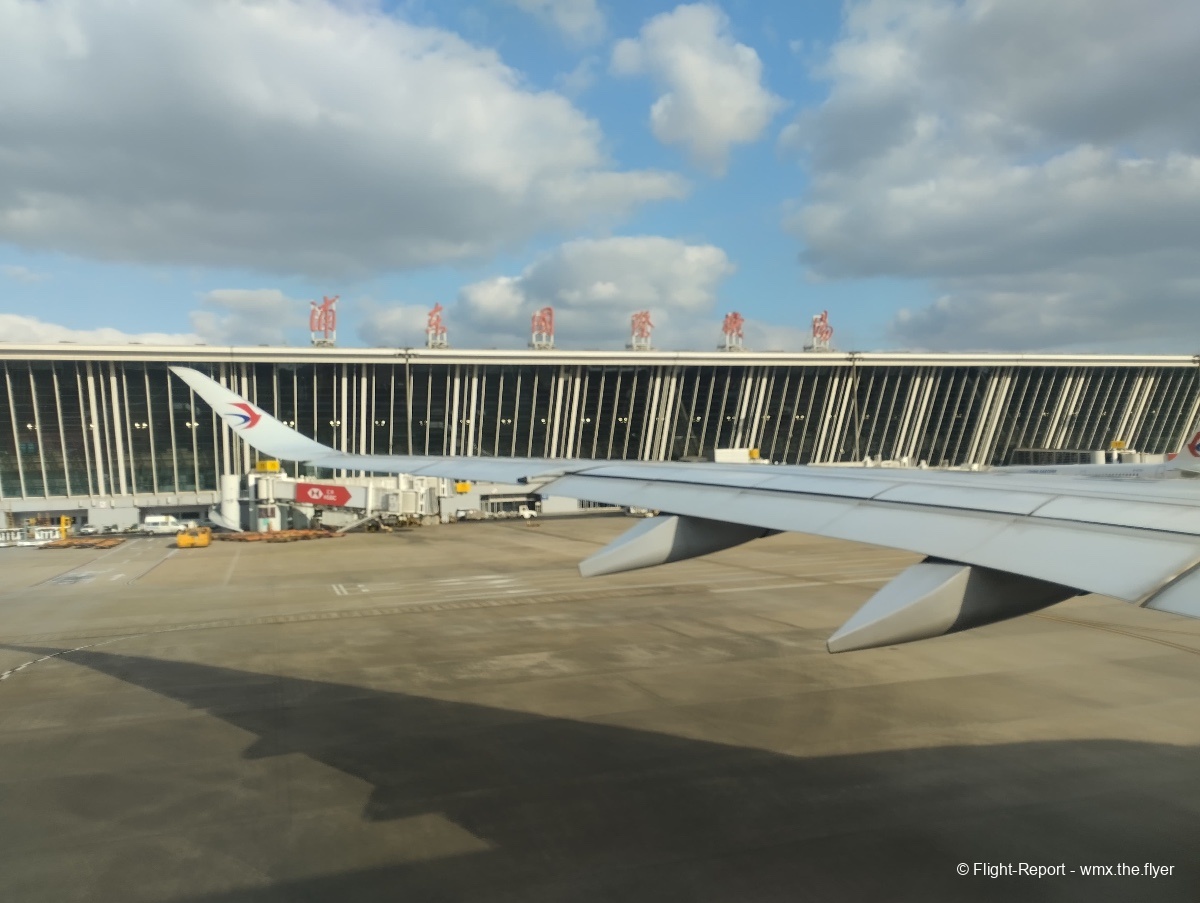
We soon lined up with runway 35R for our 14:52 departure out of Shanghai Pudong, 18 minutes behind schedule. We departed via the NXD91D SID, or Standard Instrument Departure procedure.
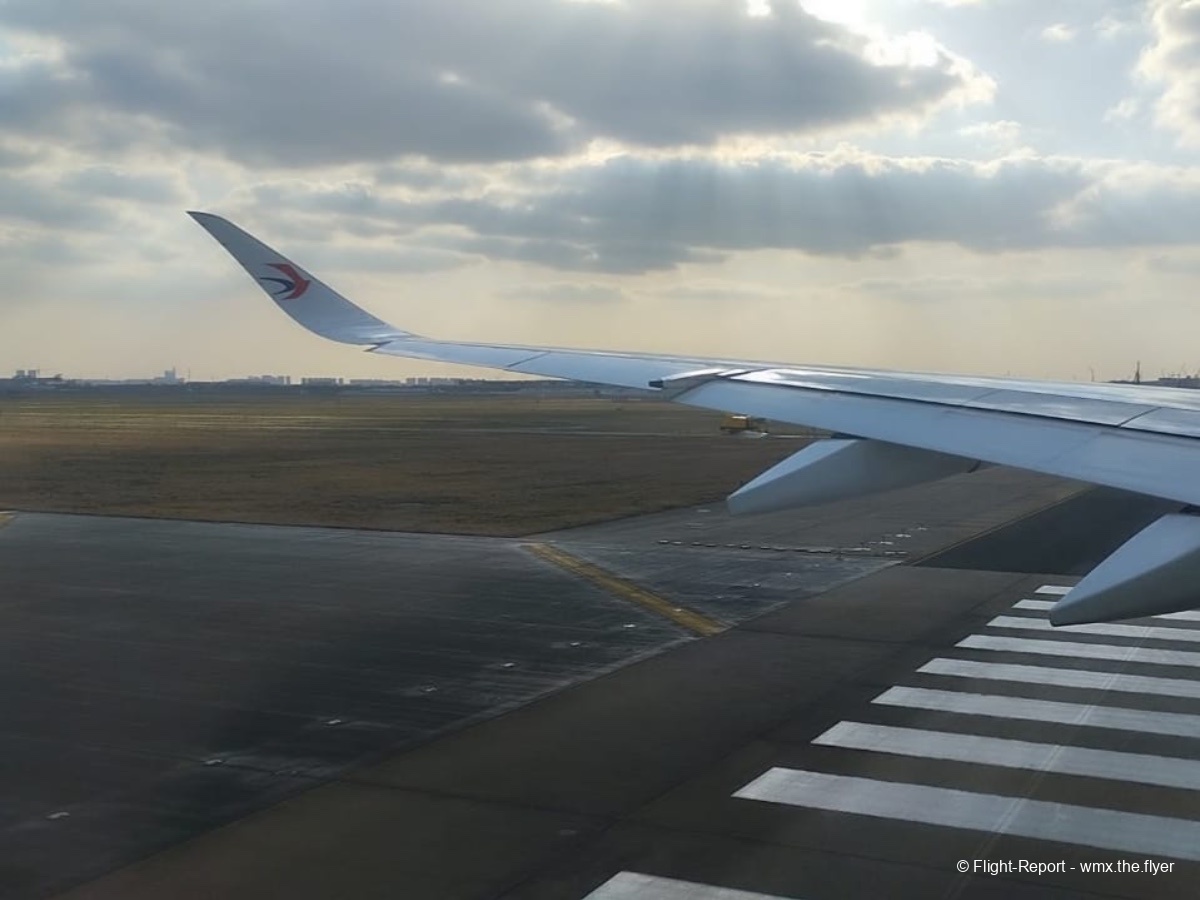

Spot the Shanghai skyline morphed into the hazy sky in the distance.

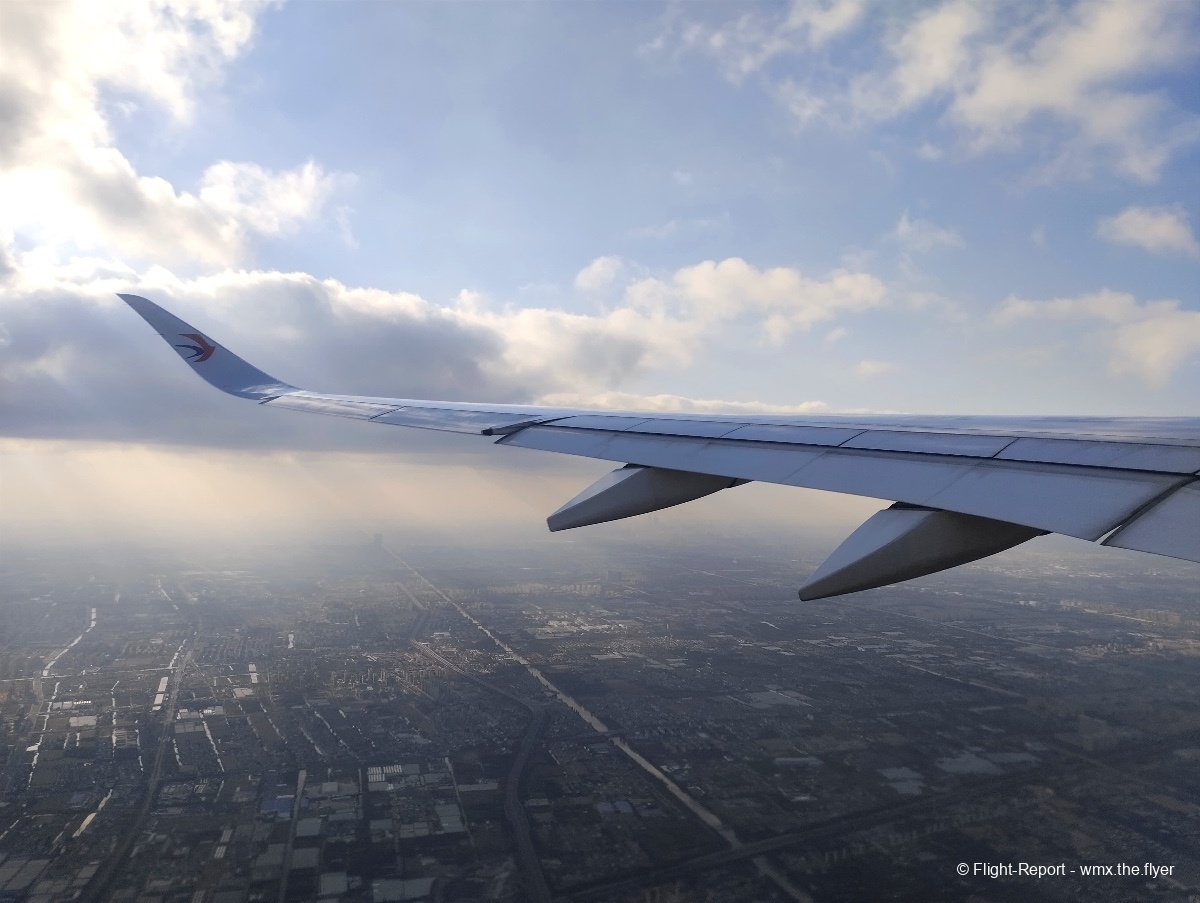
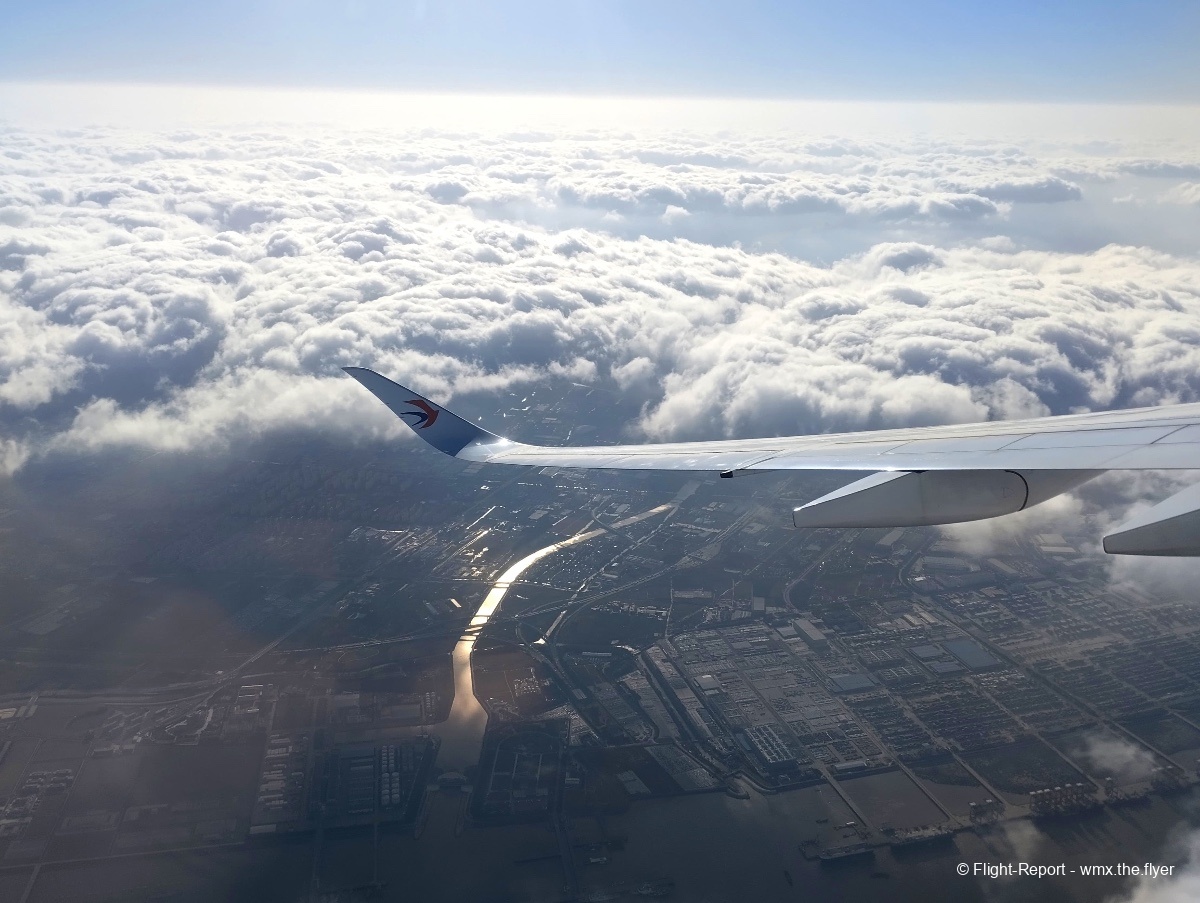
Flight path
Now is a good time to take a look at our flight path. Our route out of Shanghai took us over the Chinese provinces of Jiangsu, Zhejiang, Jiangxi, and Guangdong, before we passed over Hong Kong out over the South China Sea, coming over land again over Vietnam, then back over the sea before we started our descent over Malaysia into Singapore. Cruising altitude was 36000ft for the entire duration of the flight.
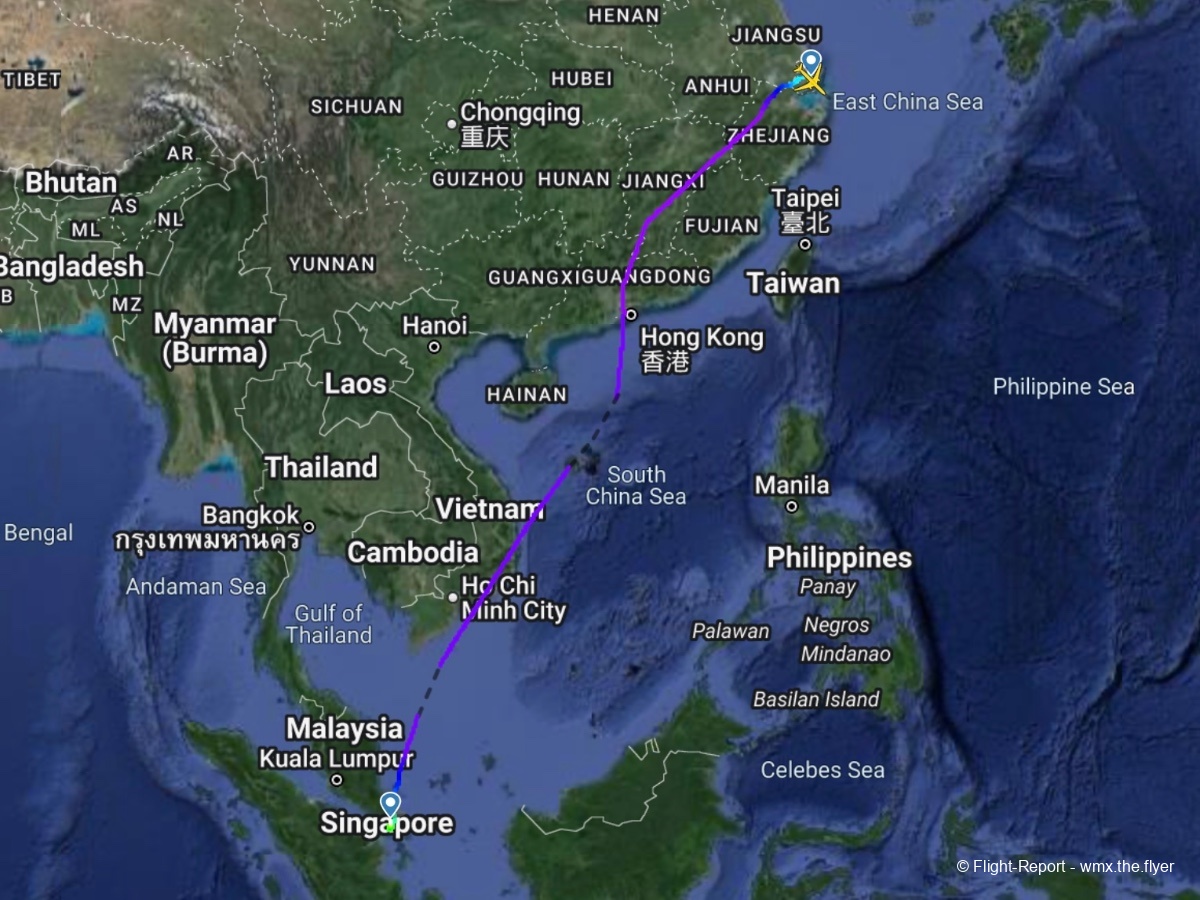
We passed over some beautiful mountains while flying over southern China.
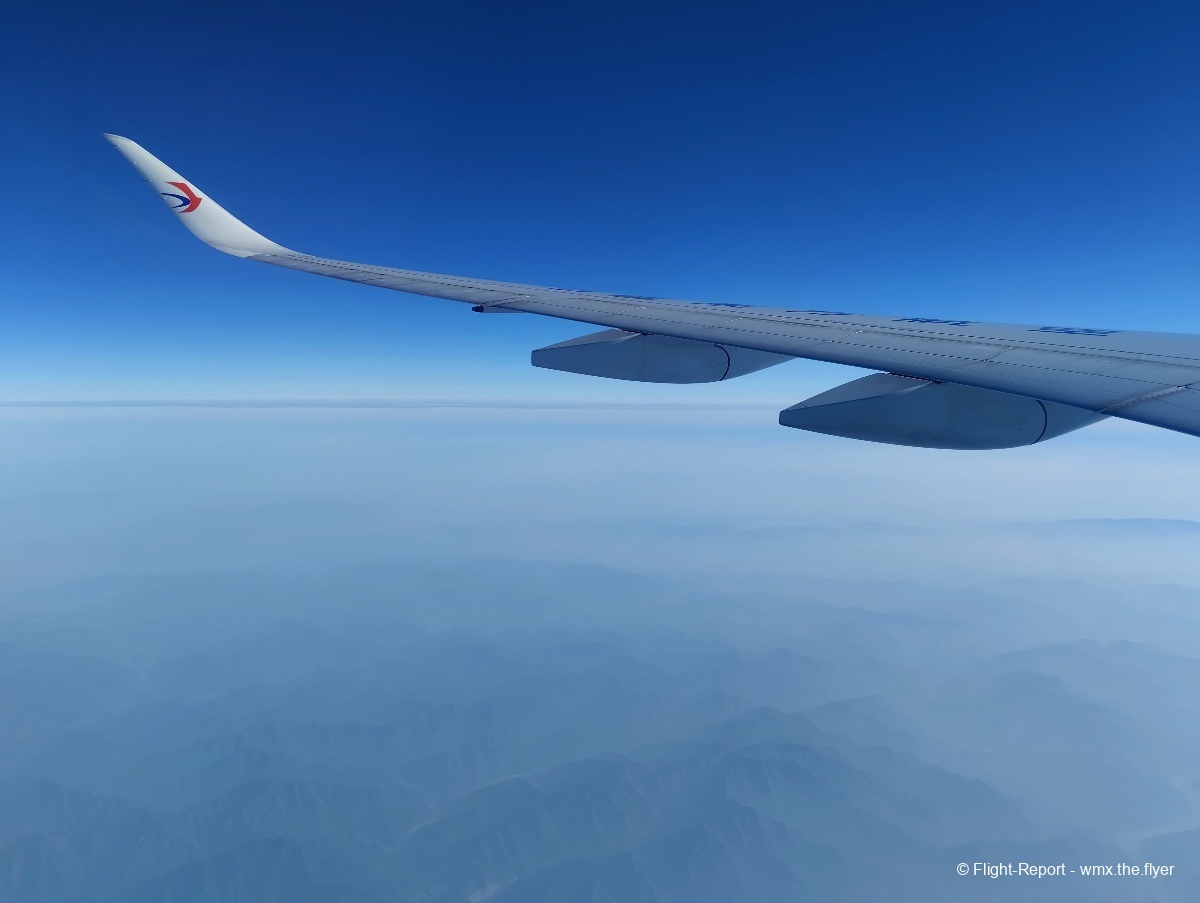

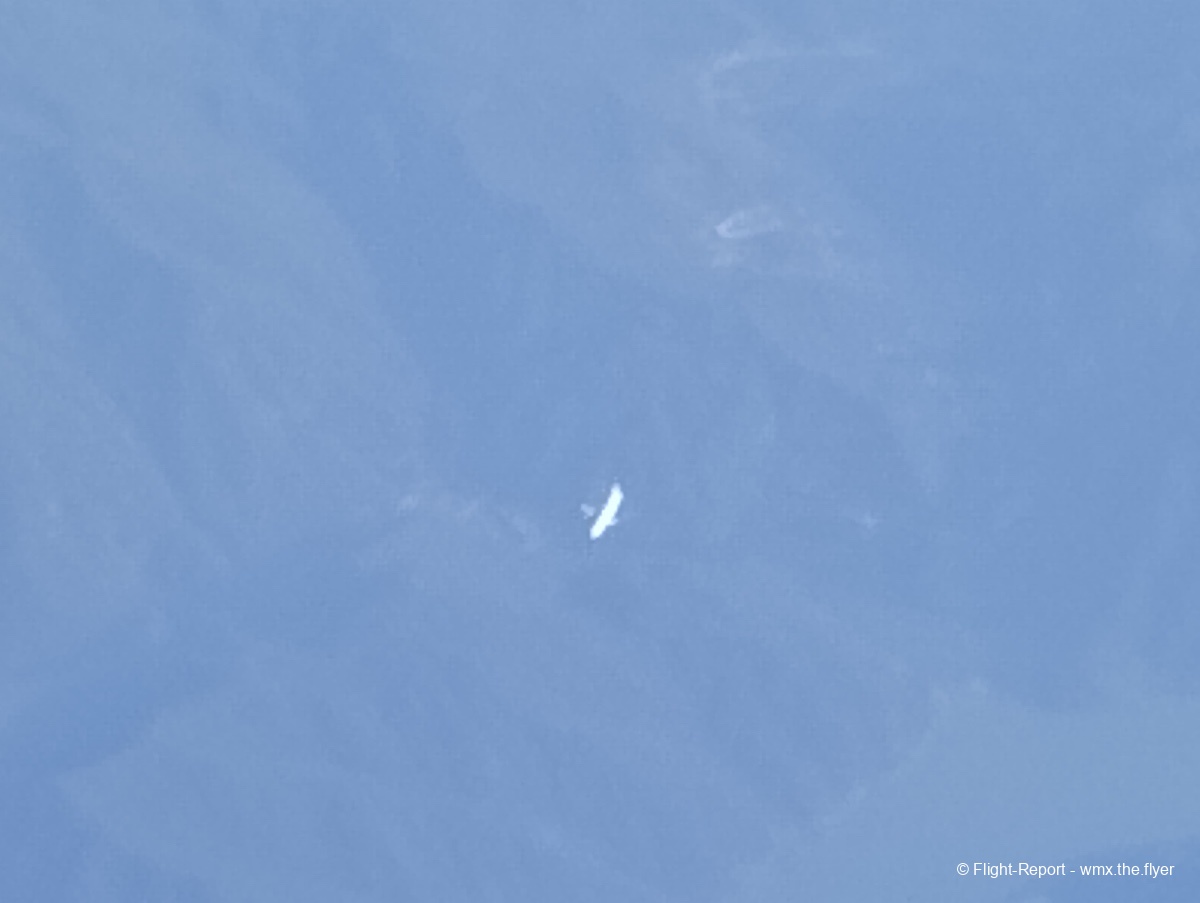
For most of the flight, we were racing side by side with a Malaysian Cargo A330-200F flying from Shanghai Pudong to Kuala Lumpur.
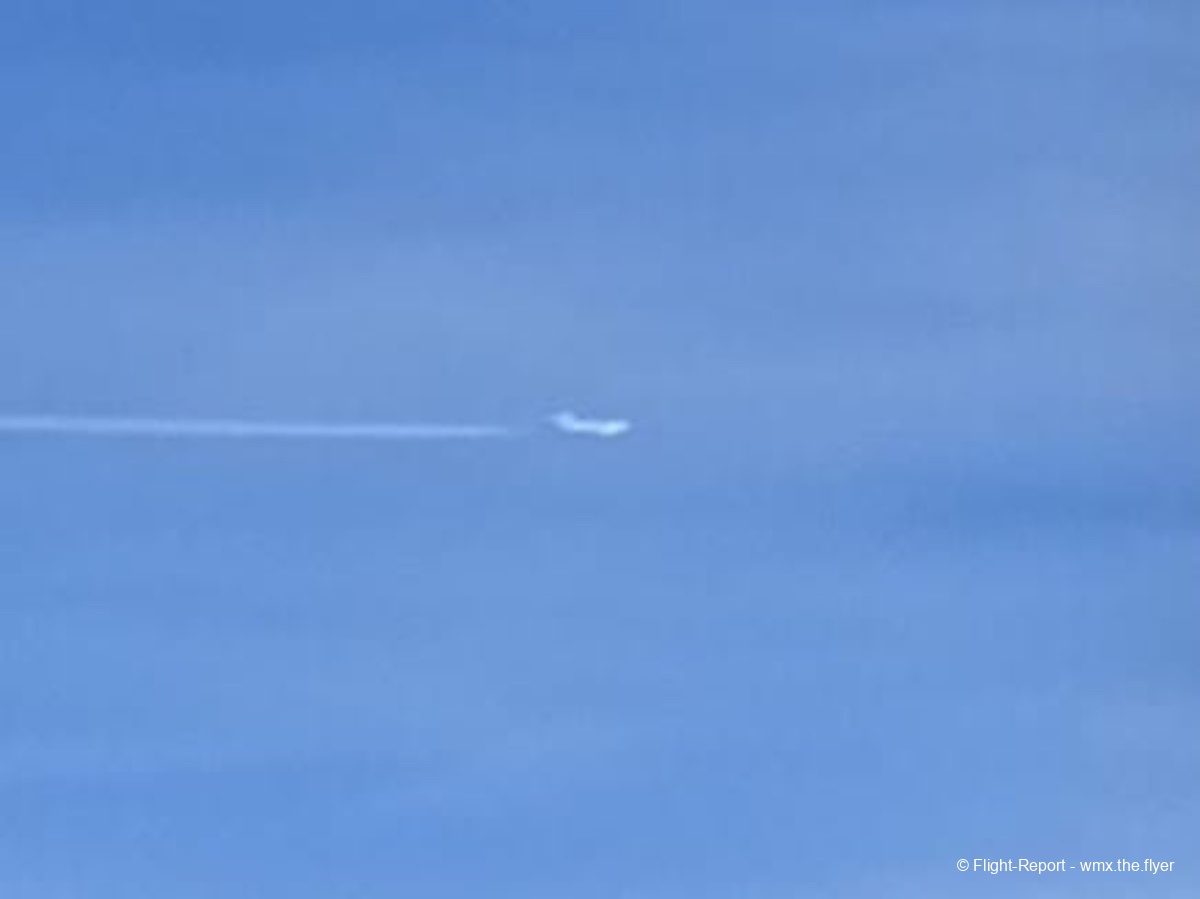
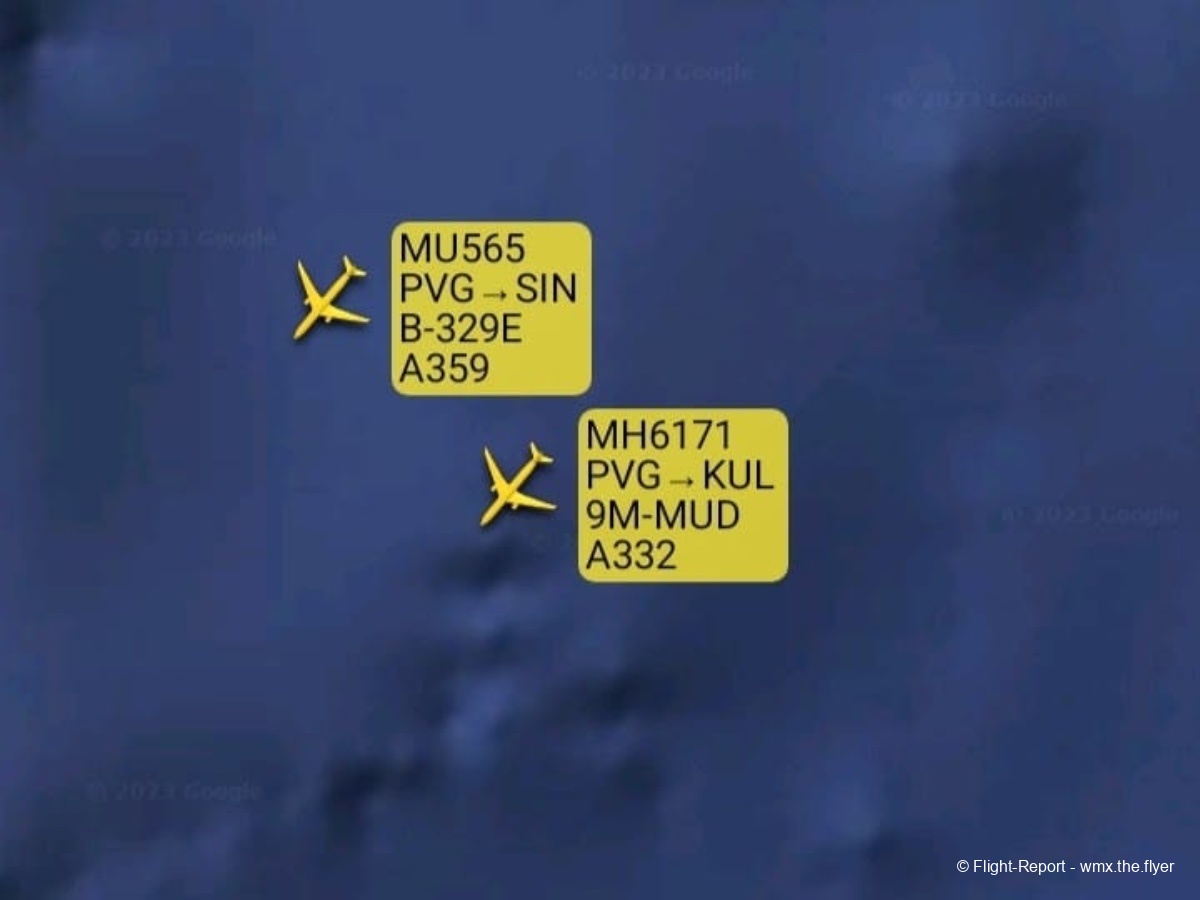
Lunch service
Approximately an hour after takeoff, the lunch service started. The cabin crew members pushed two trolleys up each aisle, one for the food, the other for beverages.
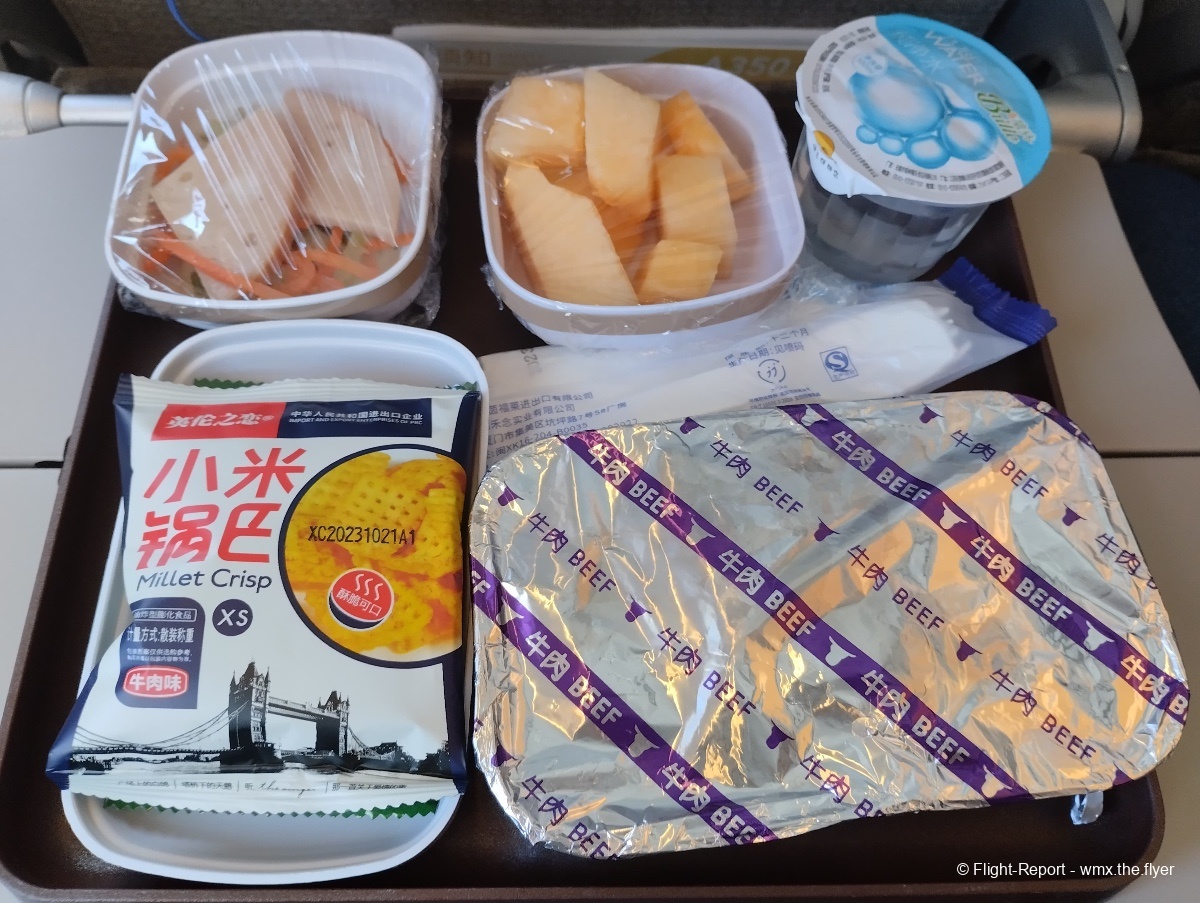
The meal was neatly placed on a single tray, with the main dish being served in an aluminium container, and the sides in cute little plastic dishes with an elegant gold trim. There was plastic cutlery provided, with surprisingly no chopsticks just like on the outbound flight, as well as a wet wipe and a small tub of water.
Starter: Salad
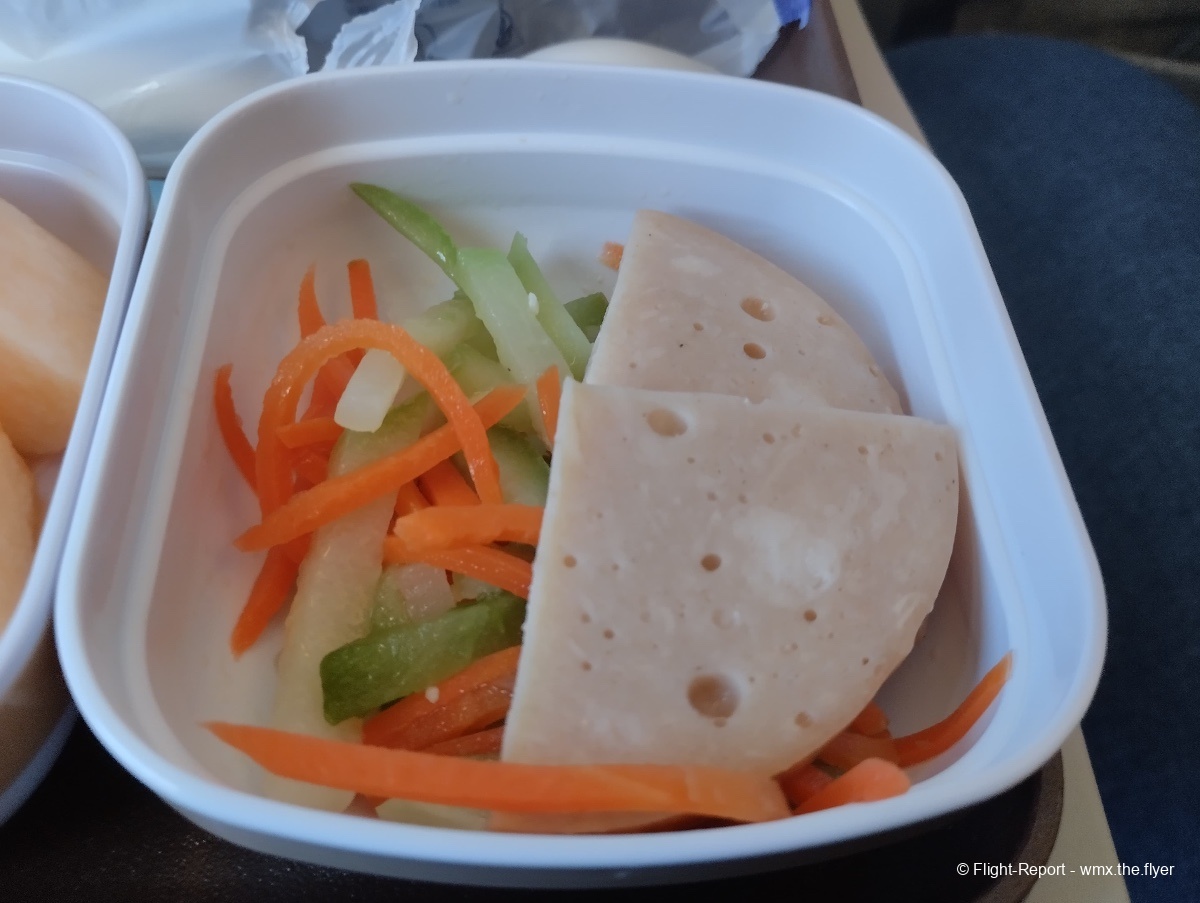
The appetizer was a small, cold salad made of shredded cucumber and carrot with a couple chunks of ham. While there was nothing wrong with this appetizer, it was not the most exciting nor was it the tastiest. Still, no major complaints. 6/10
Main: Beef with noodles

There were two choices for the mains in economy: this and a ‘sausage platter’, which turned out to just be some rice and a couple slices of miserable-looking Chinese sausage. My dish was some braised beef with unusually thick noodles, coming in an even thicker and more gooey sauce. The taste was alright, though I would argue that it most likely would have tasted better with less sauce or less seasoning in the sauce. Still, an acceptable dish. 7/10
I would, however, imagine that the average foreigner would struggle with catering on Chinese airlines, since many of these meals were designed with only the Chinese consumer in mind. While there are instances (though rare) of Chinese carriers making an effort to serve Western-style meals in economy, I doubt any of those would be any more appetising for foreign passengers either.
Side: Chinese snacks
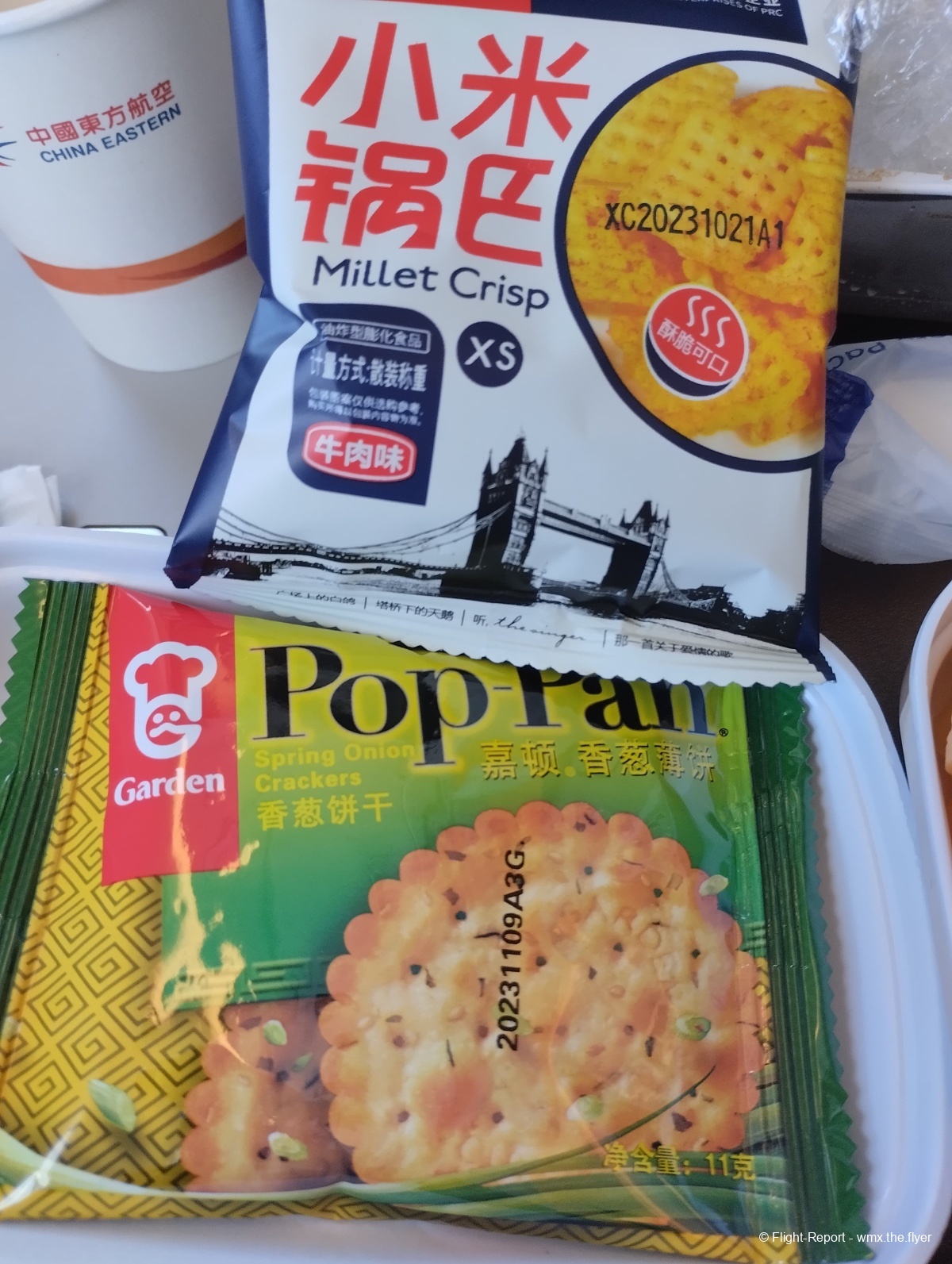
On the side where the bread rolls usually are, there are instead a couple packets of Chinese snacks on offer. These were some spring onion crackers and millet crisps. These tasted fantastic as after-meal treats, and were a delight to snack on, bringing some excitement to the experience. Genius whoever came up with the idea of serving these snacks instead of a dry bread roll. 10/10
Dessert: Rockmelon
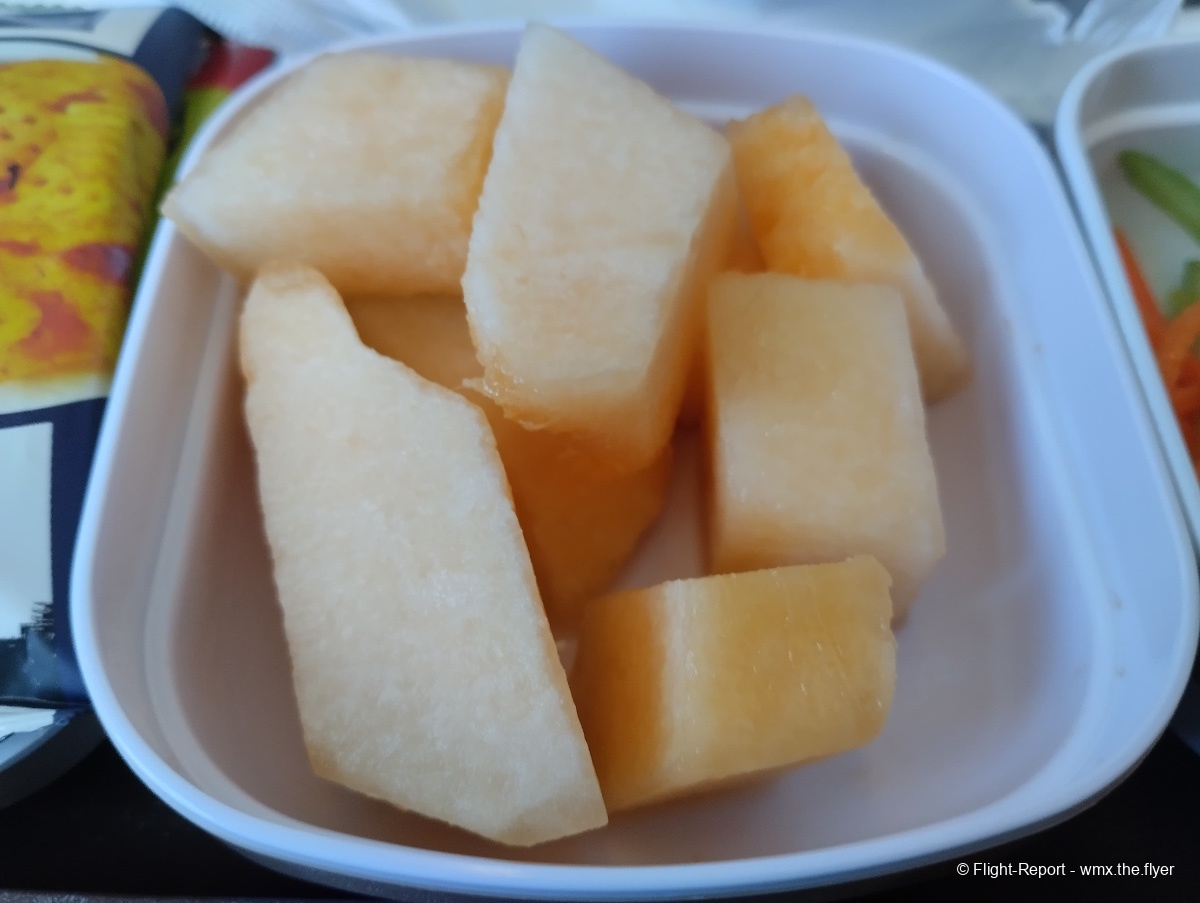
Serving as the dessert item was some bite-sized rockmelon. These were sweet, crisp, and juicy. Would have welcomed some more variety, though. 8/10
Beverage: Orange Juice, water
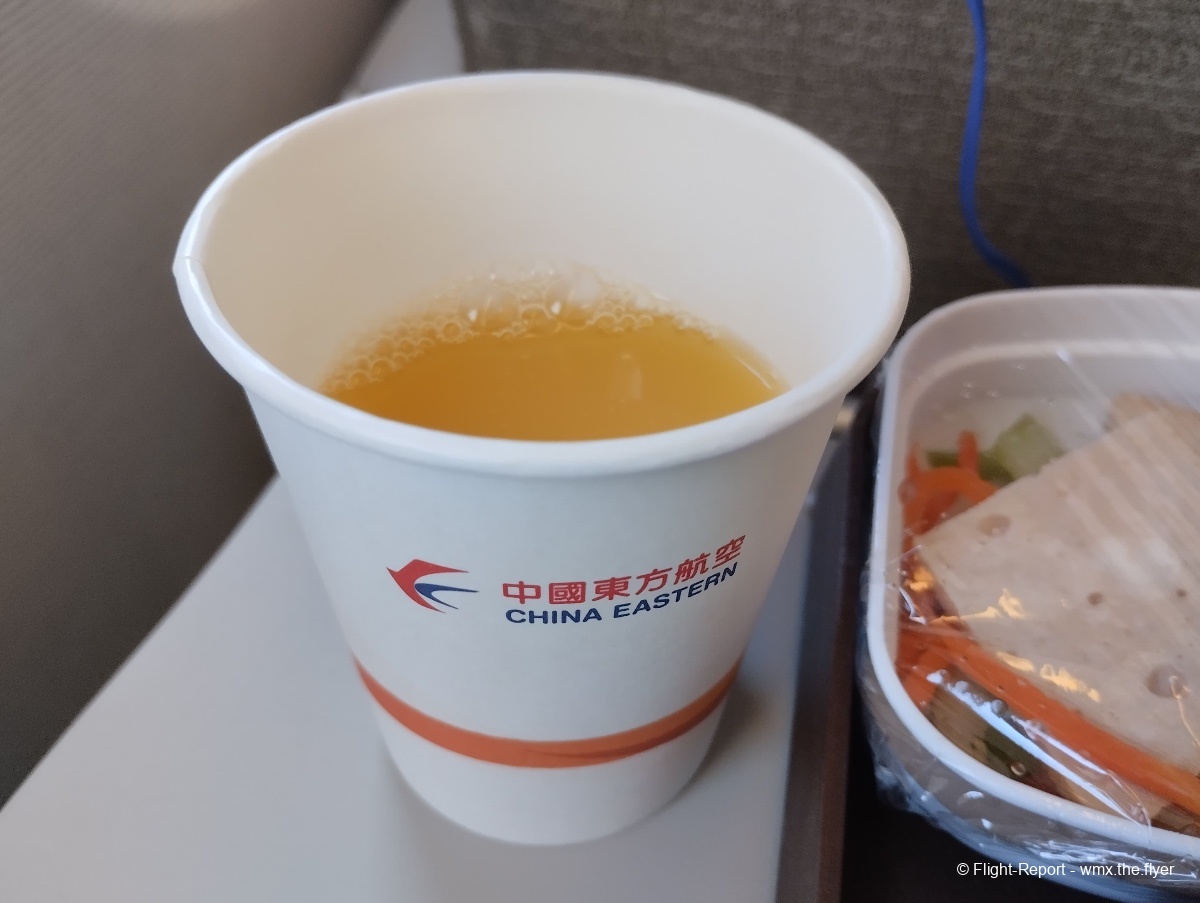
For the beverage, I opted for an orange juice, which, just like the one on my outbound flight, tasted like concentrate, and was thin, quite sour, with that slight bit of tangy bitterness. Still, I quite enjoyed it, as I always do with a lovely cup of orange juice in the sky. With the meal tray also came a small tub of still water, essential for rehydrating in the dry aircraft. 7/10
LUNCH SERVICE SCORES: 7/10
Amenities
No amenity kits were provided in economy class on this flight. The contents of the seat-back pocket included a safety manual, an in-flight magazine, and a waste bag. Cheap wired earpieces were handed out by the crew during the earlier stages of the flight. These earpieces had two plug pins, one for each side, which meant trying to use it on other devices with only one plug and without an adapter, would be quite painful.
Likewise, no pillows or blankets were provided on this flight due to its length and time, though I’m sure the crew would be able to provide you with any bedding if asked nicely.
Lavatories
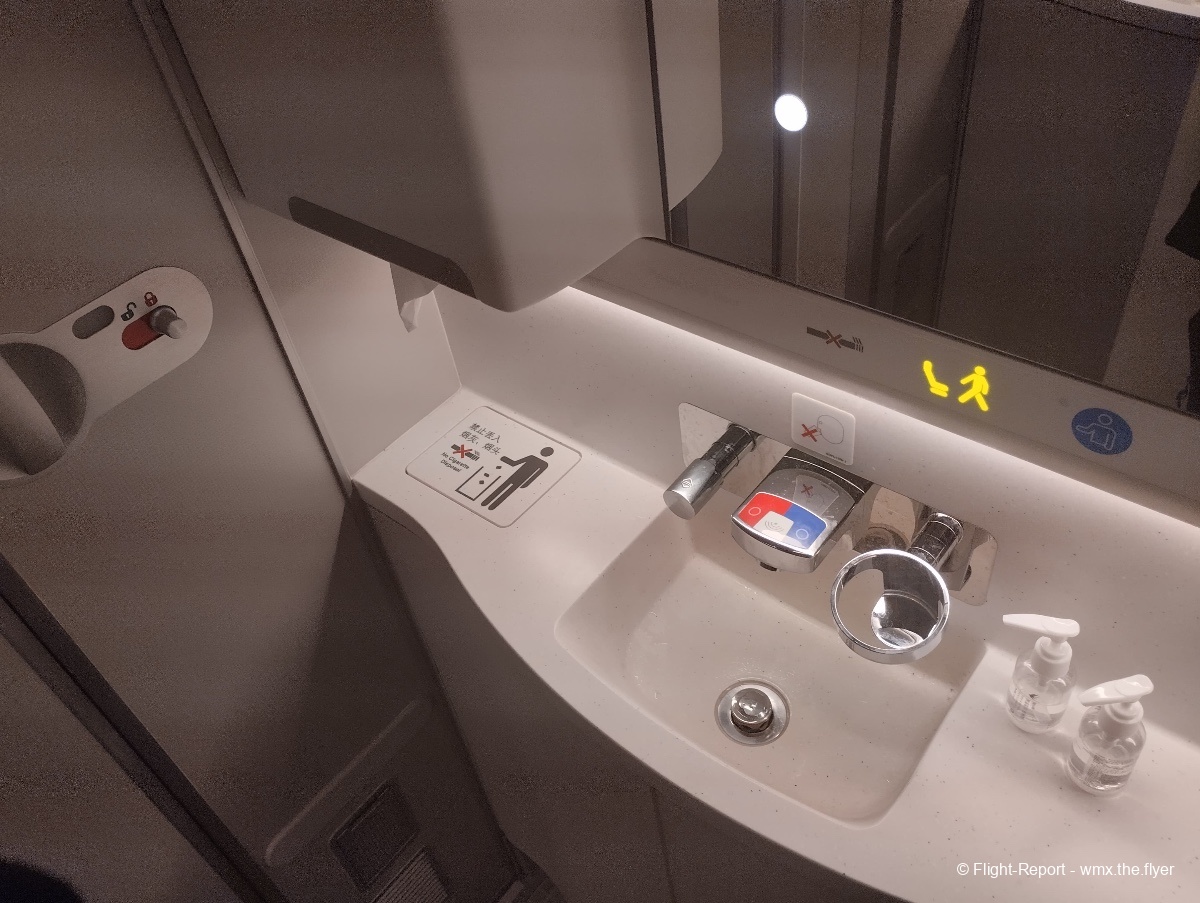
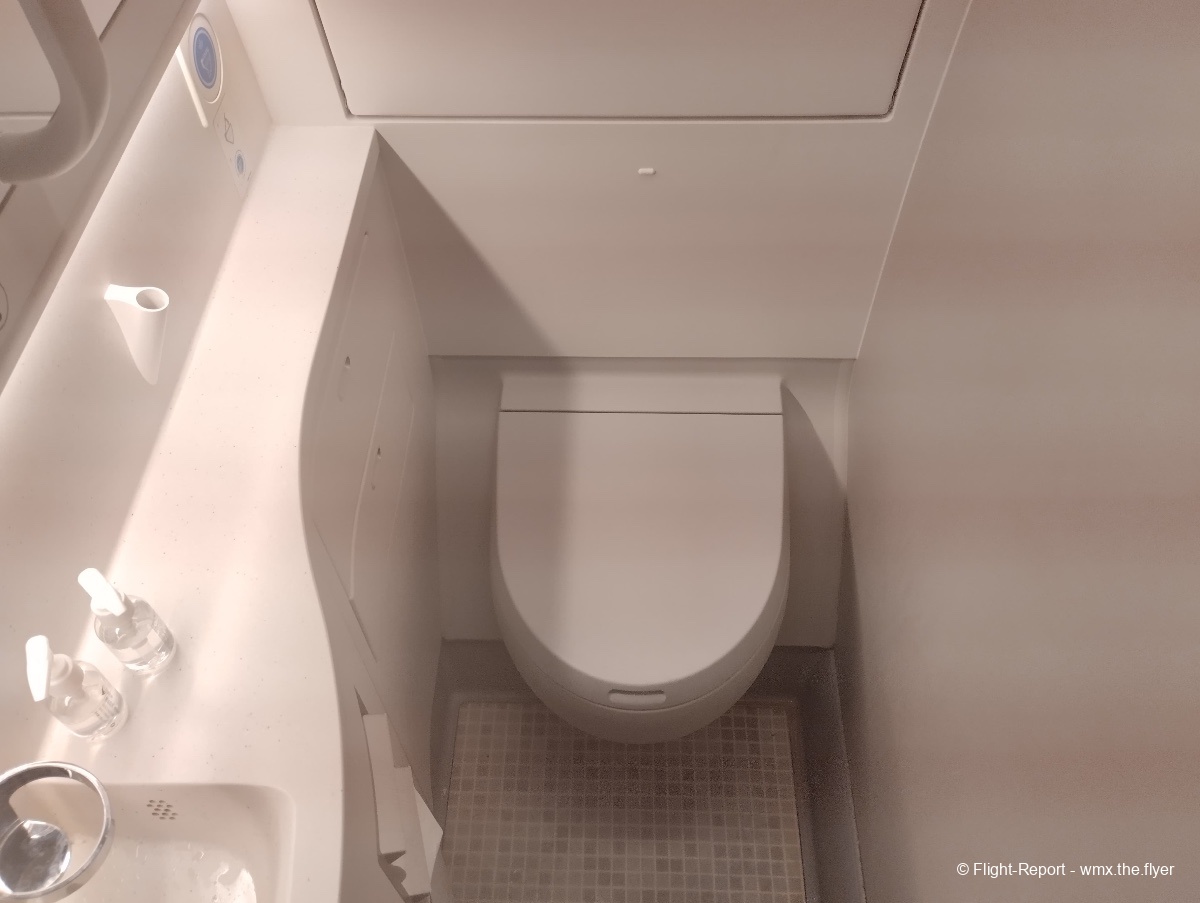
Lavatories were kept clean throughout the flight and were well stocked with toiletries. I love the little mosaic-style tiles that China Eastern implements on the floors in the lavatories.
AMENITIES SCORE: 6/10
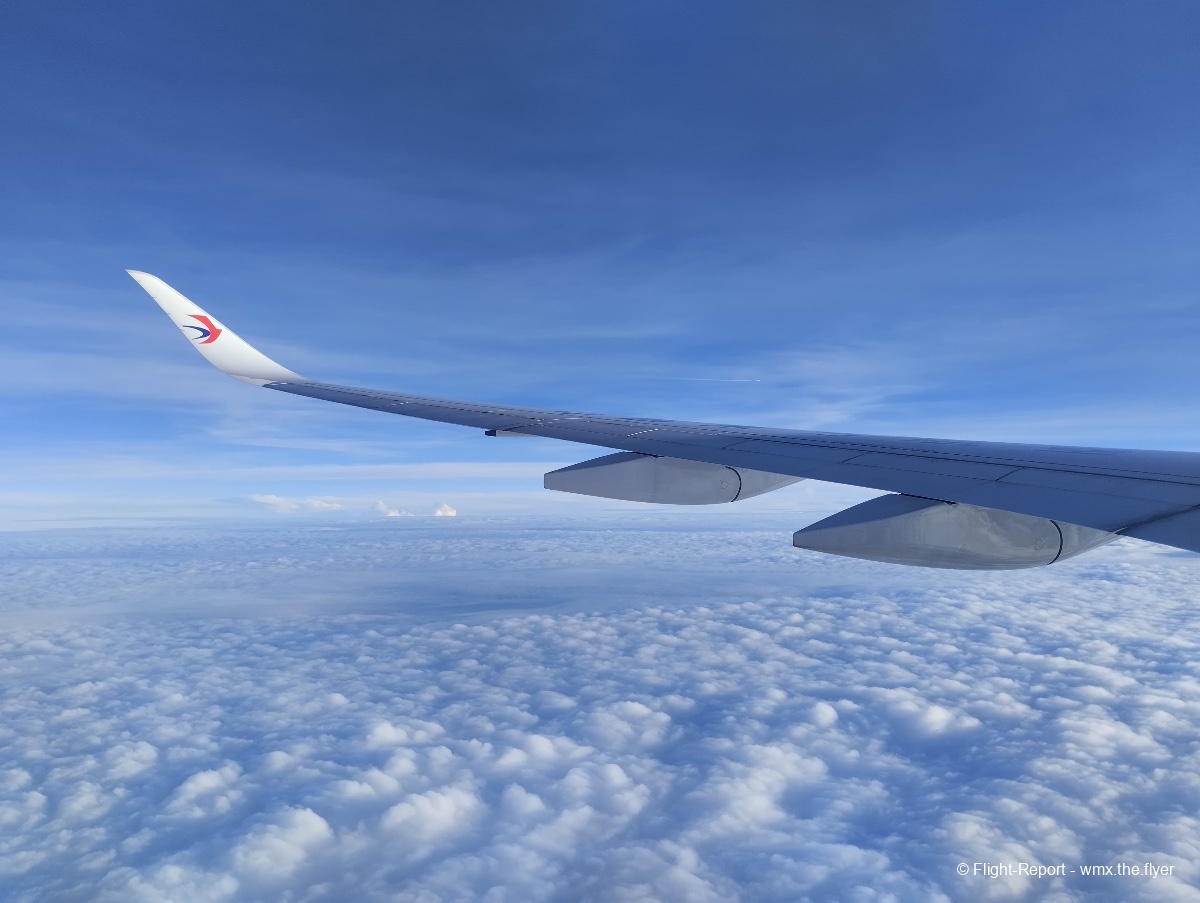
In-flight entertainment
IFE System
Each economy seat comes equipped with a 11.7” IFE Touchscreen and has really good image quality while being very responsive.
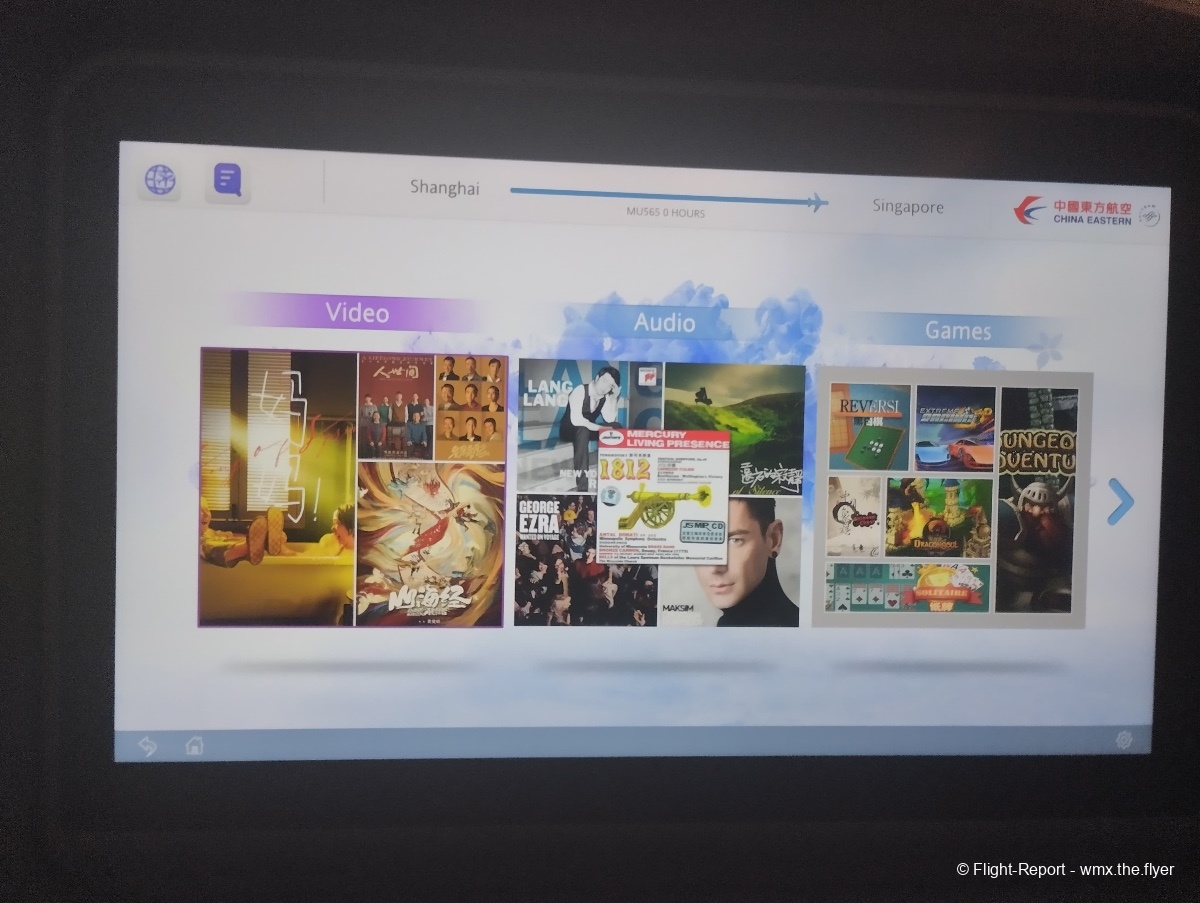
The selection of entertainment options, though, especially those catered to the western audience, was rather bland, with just 13 western movies on offer. Other than movies, some Chinese TV shows, as well as a broad selection of music, was available too. The in-flight map was also quite fun to play with, comping with multiple camera angles, with the cockpit HUD view being my personal favourite.
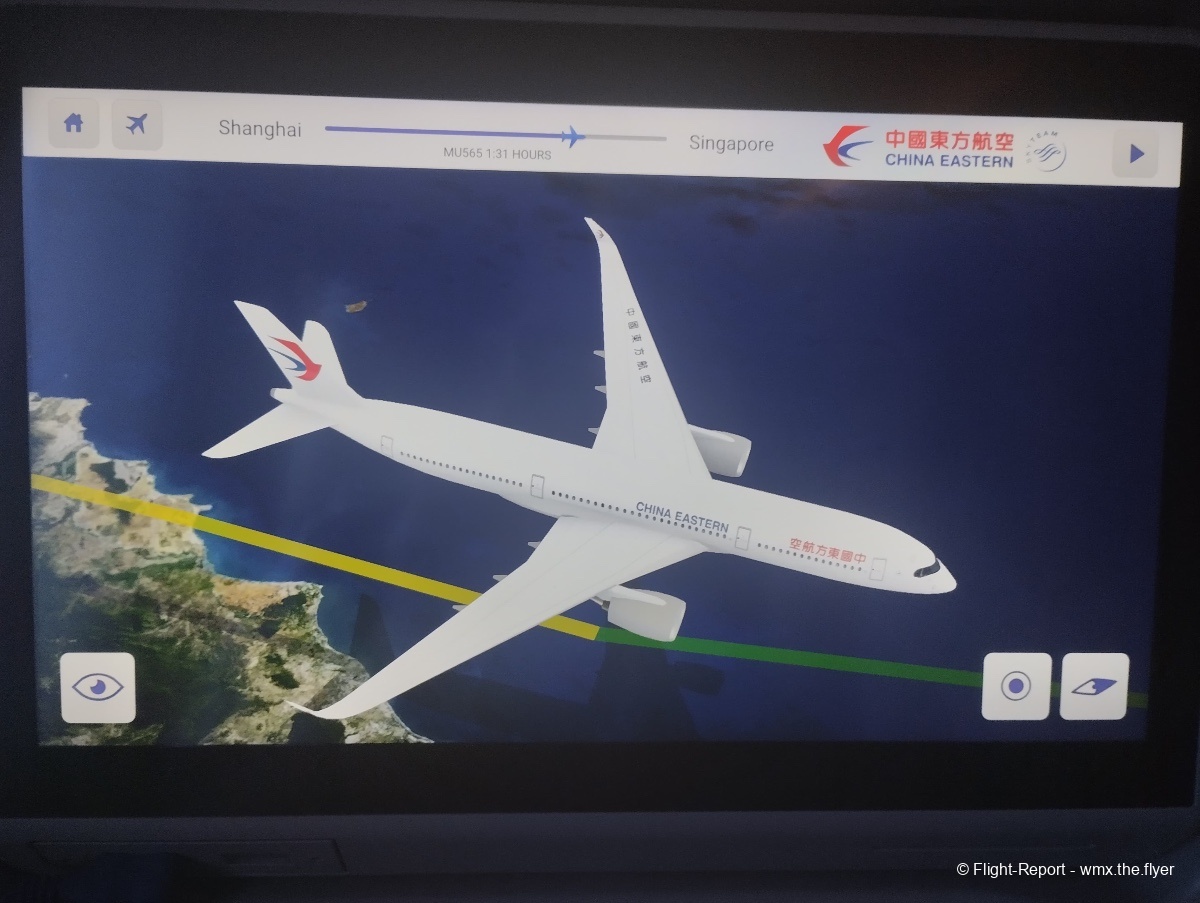
The best part though, had to be the HD external camera views, of which the tail view was my (and probably everyone else’s) favourite.
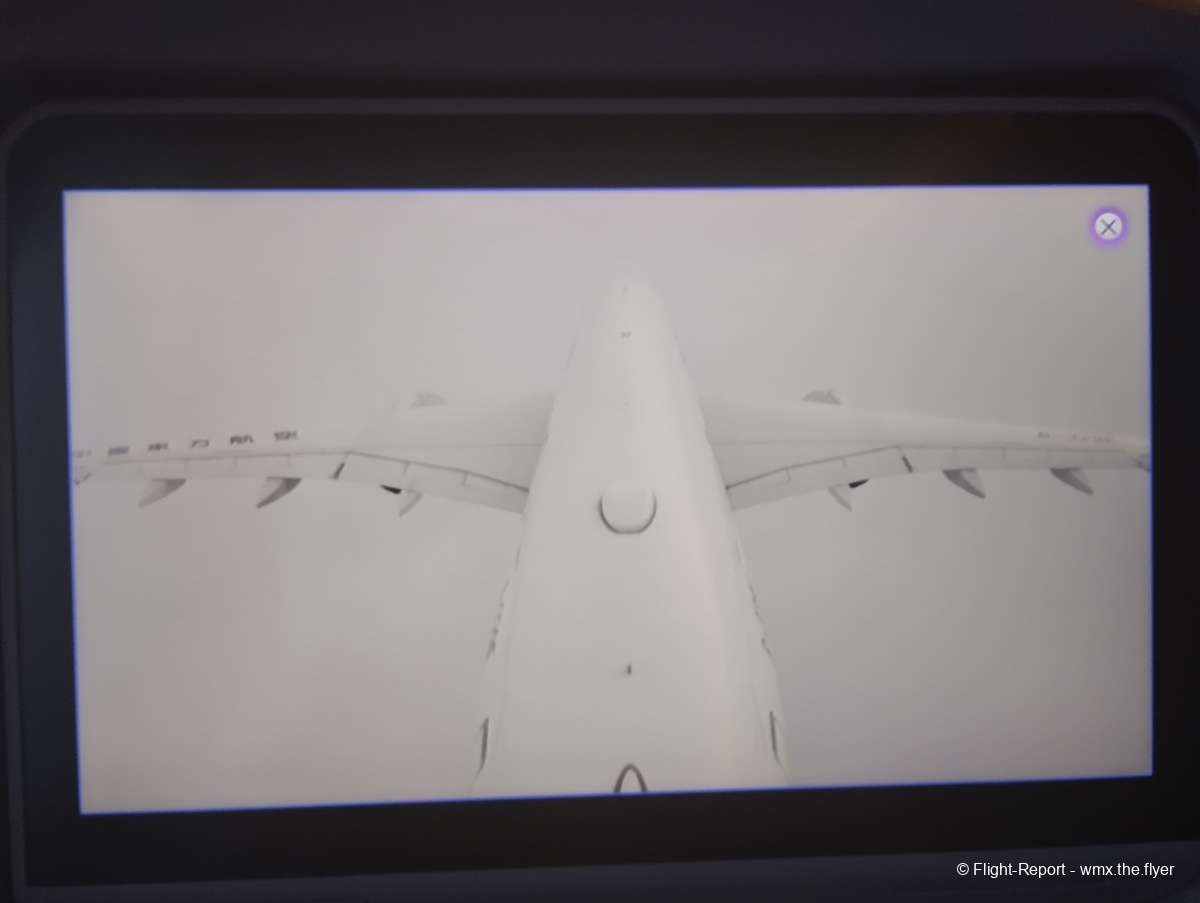
Again, I found the descriptions under the western movies to be quite funny due to just how little effort was put into writing them.

Onboard Wi-Fi
Passengers in economy class get free access to the onboard Wi-Fi for 10 minutes. However, do note that the onboard Wi-Fi has the same limitations as in the rest of Mainland China, so many websites and apps such as YouTube and Instagram are blocked and unusable. For full-flight access, one could pay online, though I would not trust the website given how glitchy it is.
Onboard charging
There were two Universal Power Outlets at every 3 seats. A USB-A socket can also be found under each IFE screen.
IN-FLIGHT ENTERTAINMENT SCORES: 6/10
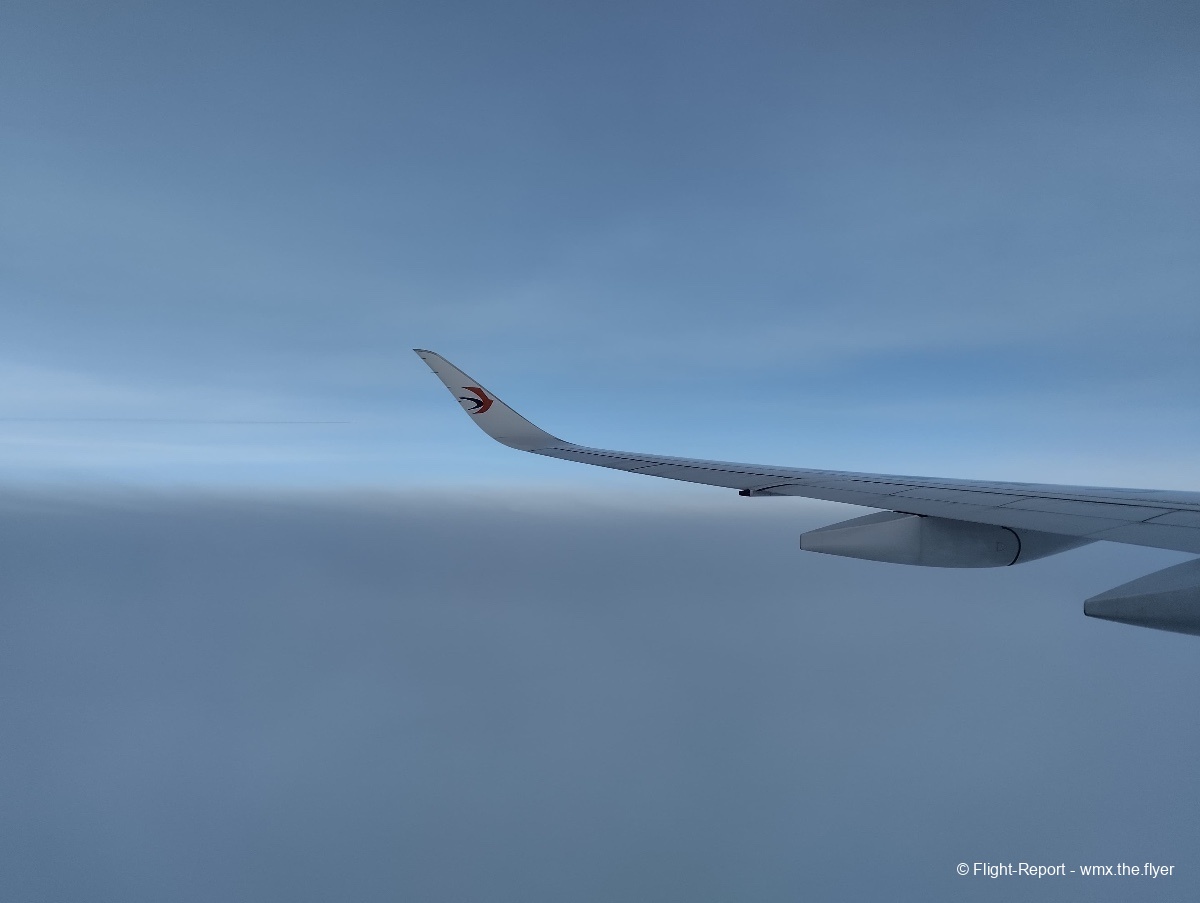

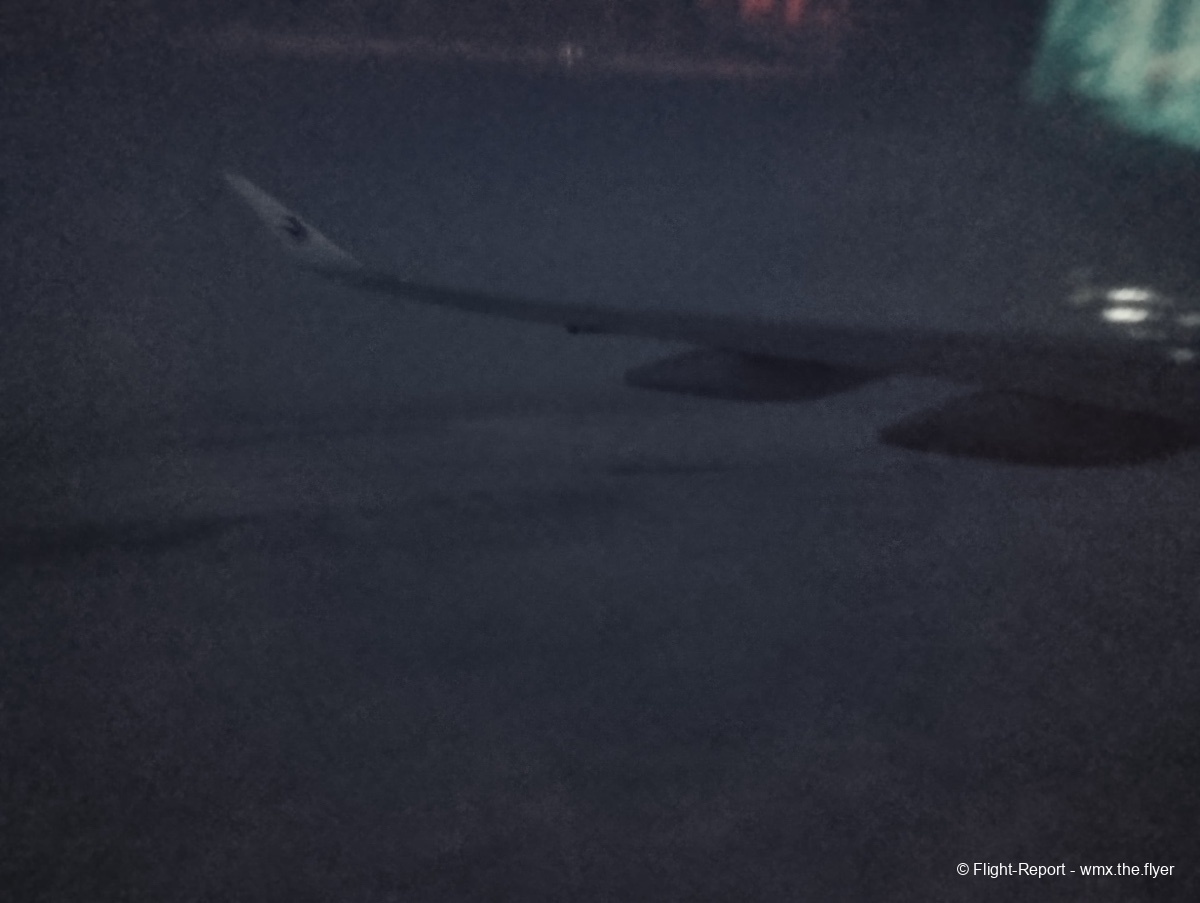
While the sky outside darkened, many passengers onboard slept. I, however, kept myself entertained with the in-flight entertainment and occasionally strolled around the economy class cabins.

Cabin crew
Before we descent into Singapore Changi, I will share some of my thoughts on the cabin crew of this flight.
Service speed
Service speed, while not the fastest considering the meal service only started around an hour after takeoff, was pretty consistent during the meal service itself, with everyone getting their meals within a relatively short period of time.
Service attitude
The flight attendants were hardworking and diligent, though I felt they were not quite as warm and friendly as the crew on my outbound Shanghai Airlines flight.
CABIN CREW SCORE 8/10.
Approach + landing
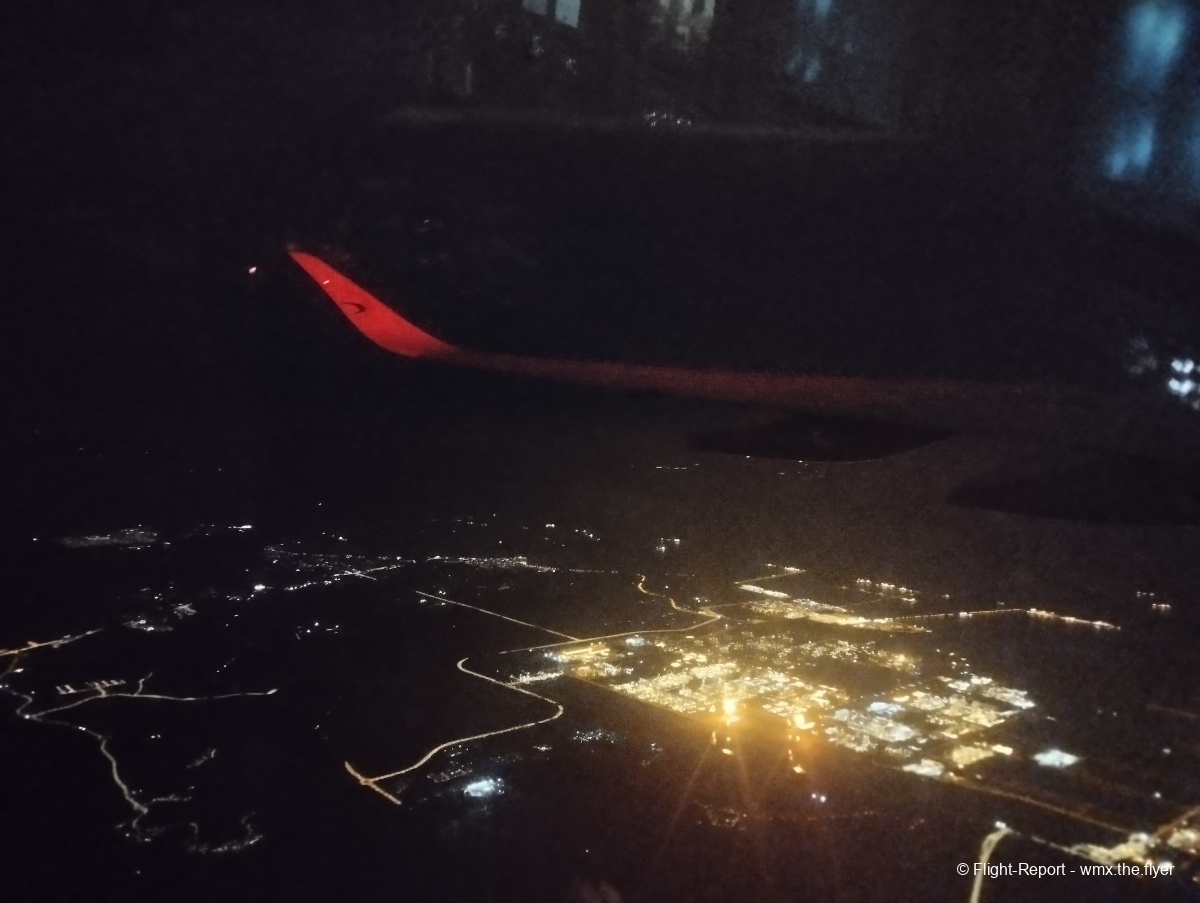
The aircraft descended from the north via the ELAL1A STAR, or Standard Terminal Arrival procedure. During our final approach as we lined up with the runway, we were treated with excellent views of the Singapore skyline. I know it looks pretty underwhelming on camera, but it was really quite stunning to see it in person.
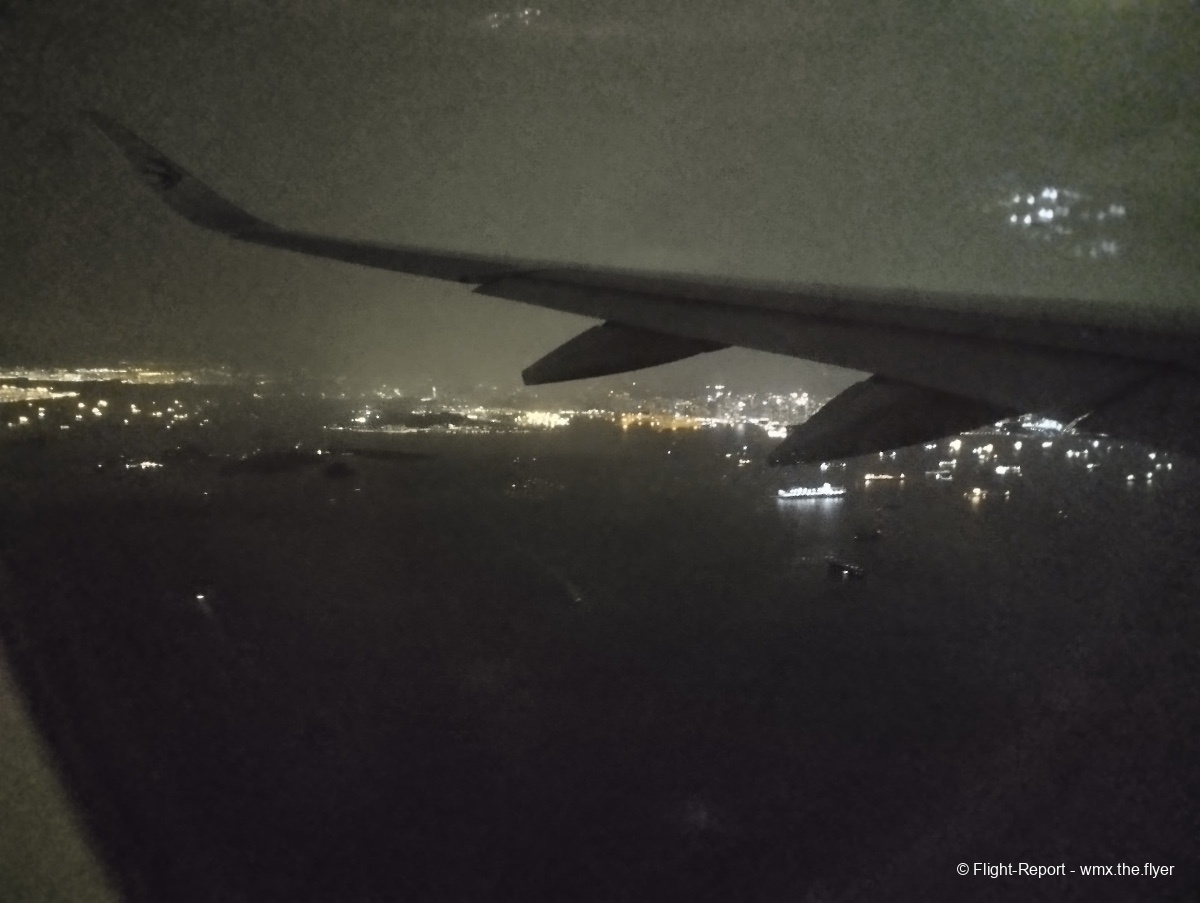
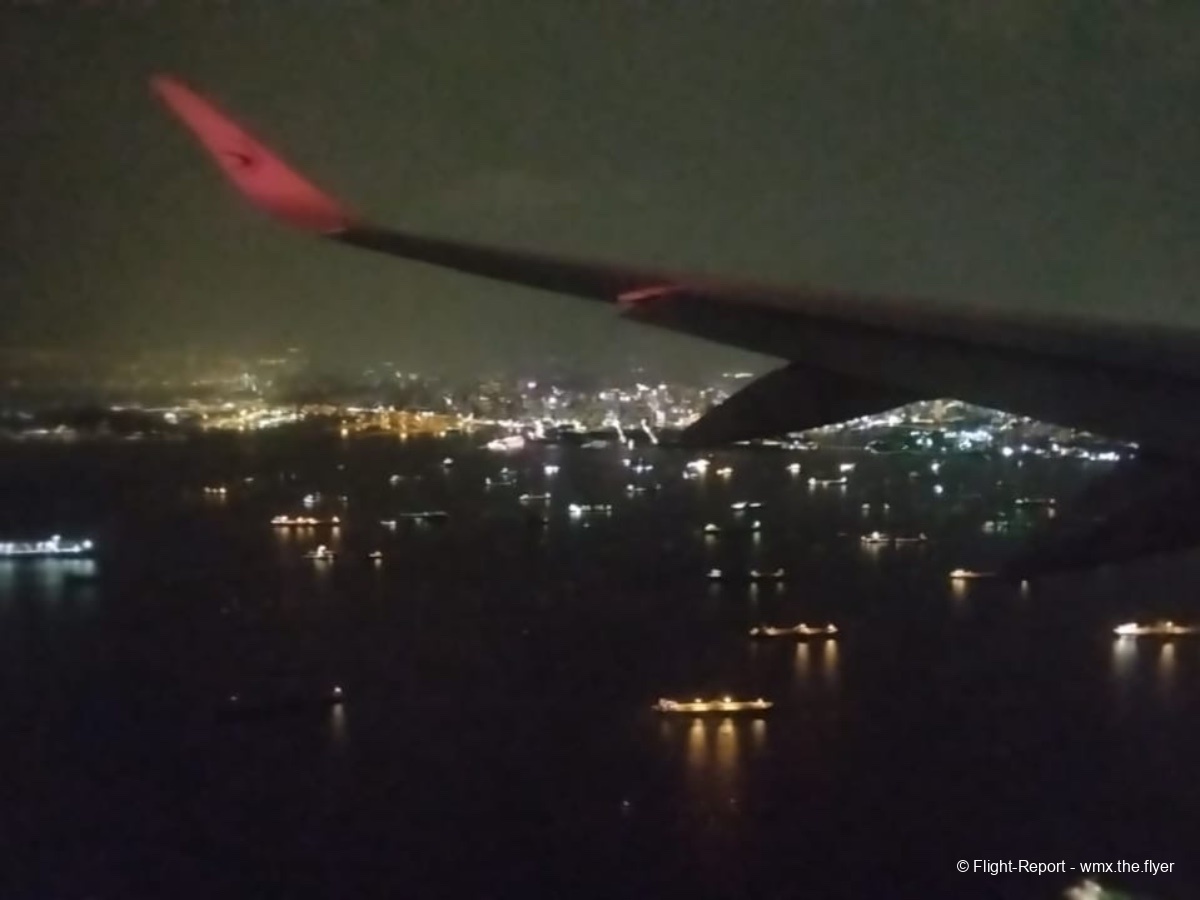
We touched down on runway 02L at 19:59 local time, a good 26 minutes ahead of schedule.
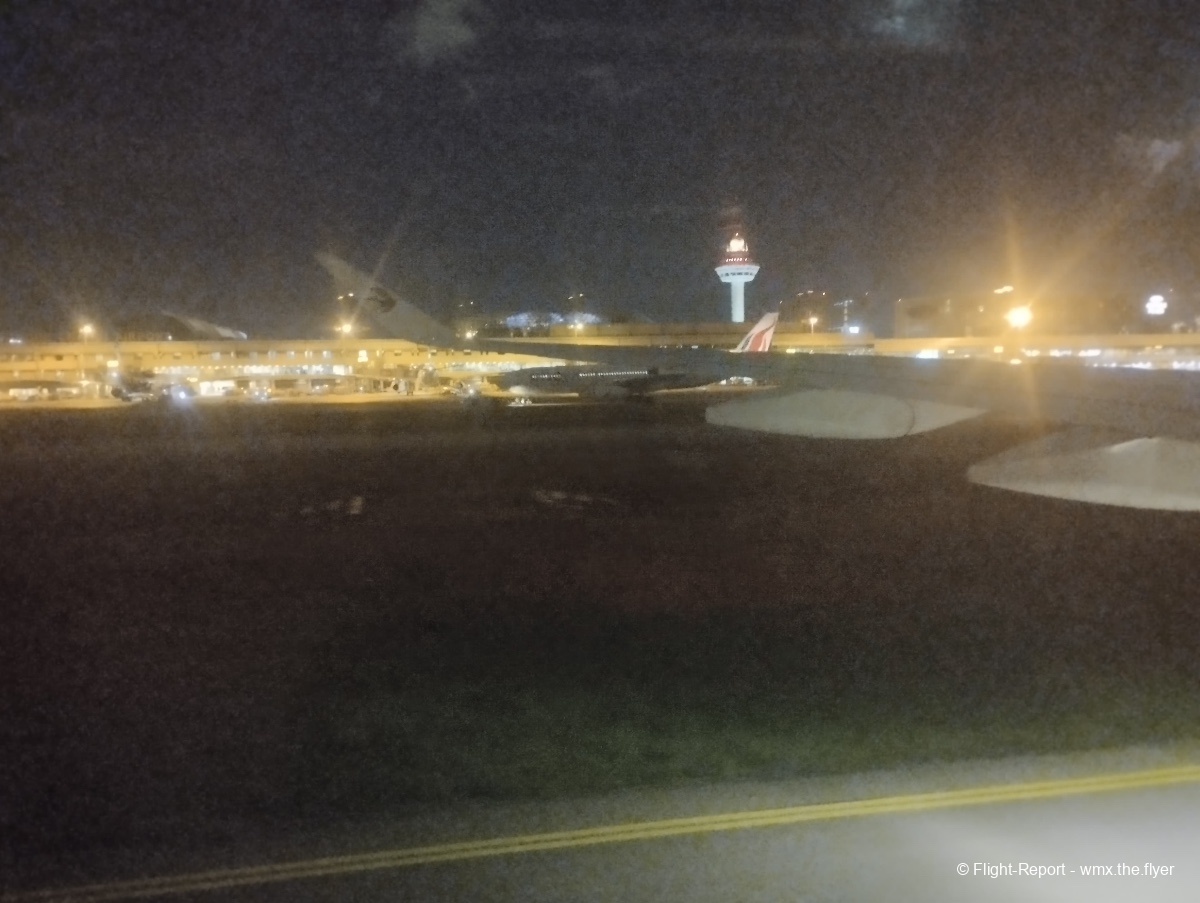
Arrival airport - Singapore sin
Our aircraft parked at gate B1 of Terminal 3, right next to a Singapore Airlines Airbus A380 registered 9V-SKV.
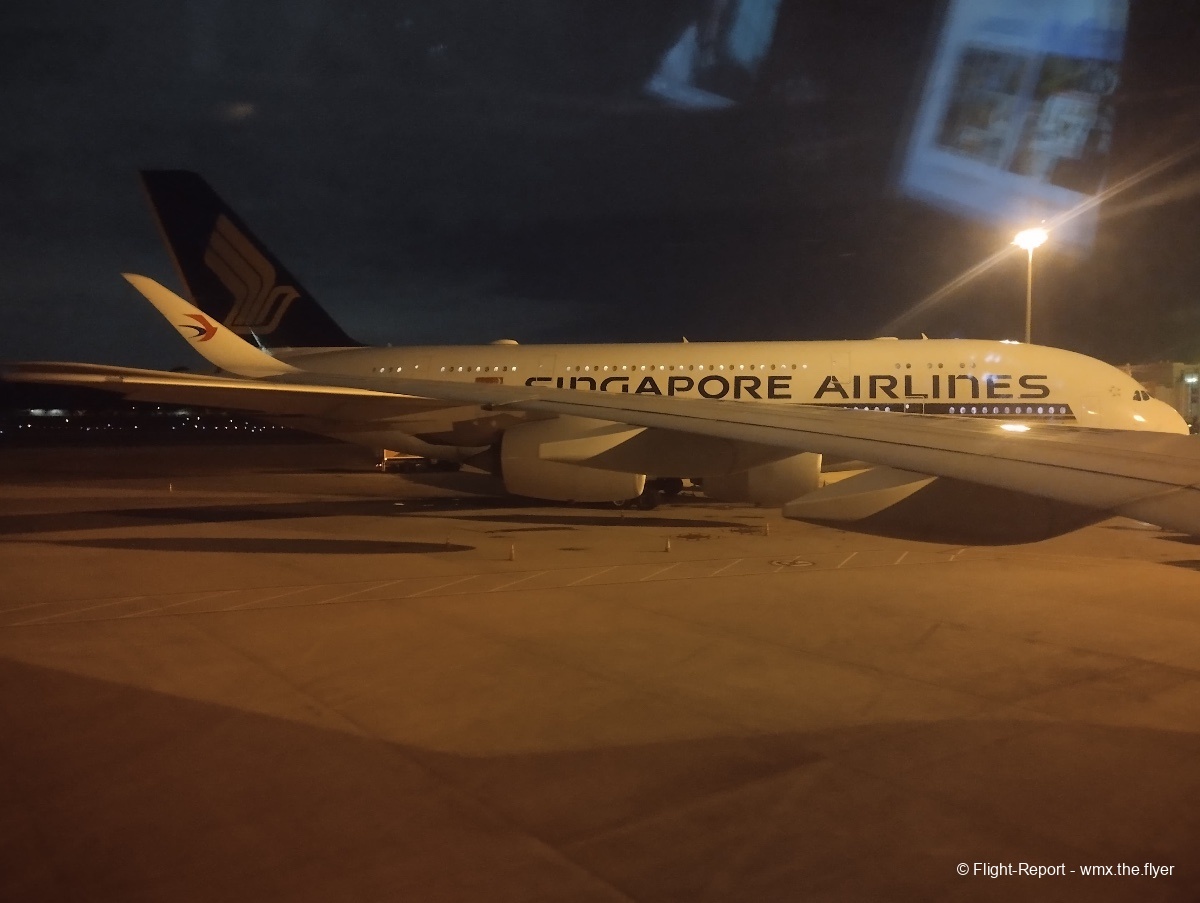
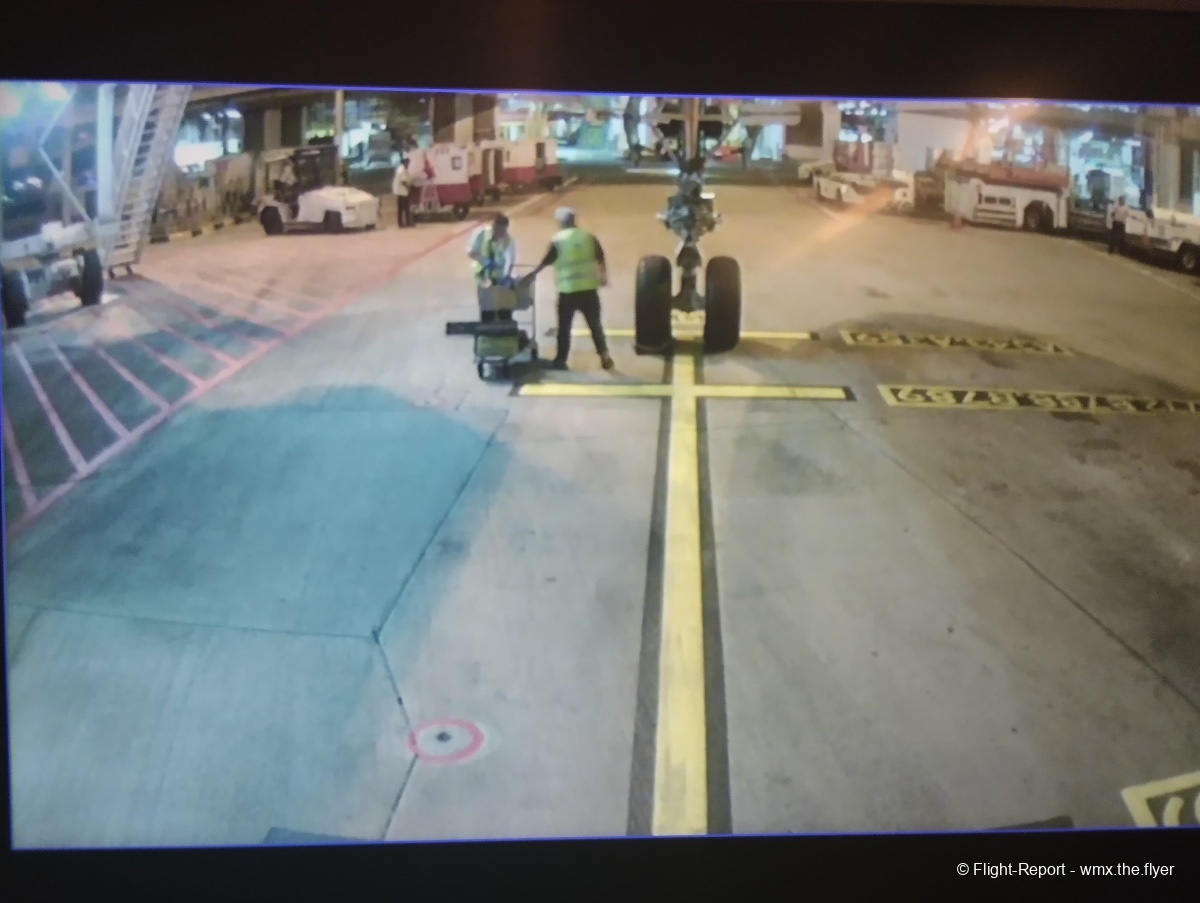
Deboarding was quite quick, and while making my way up the aisle, I managed to snap a few more shots of the seats.
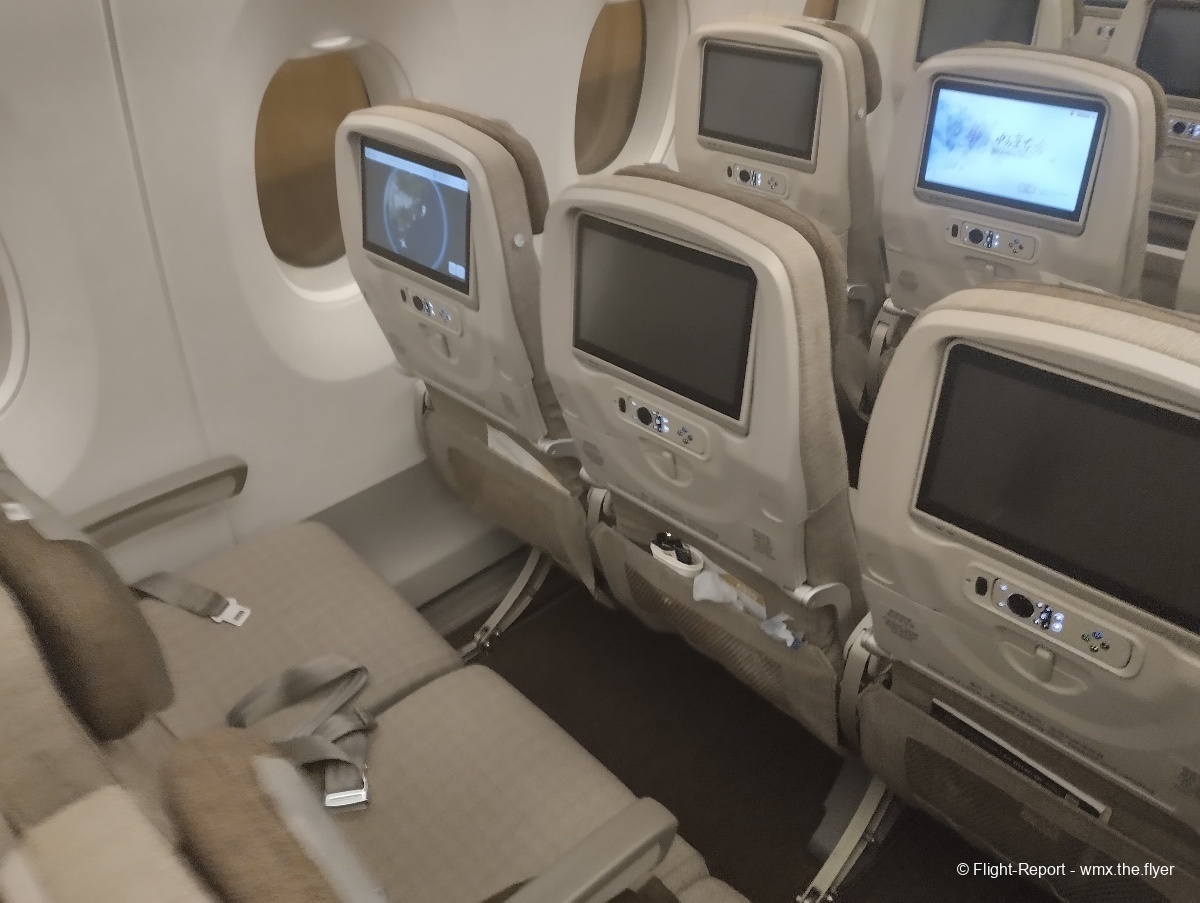
History and Current Operations at the Airport
Changi International Airport was opened in 1981 with the Terminal 1 (which, like Terminal 2 now, had gone through extensive upgrading over the years, with the most recent one having ended in 2017). The former Singapore International Airport at Paya Lebar was converted for military use and was renamed Paya Lebar Air Base. In 1990, Terminal 2 was opened to accommodate the ever-growing passenger demand. Terminal 3 was opened in 2008, with the SIN-based Singapore Airlines being the primary operator of this terminal. Terminals 1, 2, and 3 form a ‘U’ shape, allowing for easy access in between terminals. Terminal 4 was opened in 2017. The Jewel, a massive shopping complex with the world’s largest indoor waterfall, was opened in 2018 to boost human traffic at Changi Airport. A brand new, larger-than-all-previous-terminals-combined Terminal 5 is currently under construction works and is expected to open in the early 2030s to more-than-double passenger capacity.

Throughout the years, Changi Airport has been rated ‘World’s Best Airport’ by Skytrax 13 times, most recently reclaiming the title over Doha’s Hamad International Airport (2021) and Tokyo Haneda Airport (2022) in 2023. Changi Airport currently has three operational runways: 20L/02R, 20C/02C, and 20R/02L. Changi Airport was the first airport in the world to hold this title for eight consecutive years, doing so between 2013 and 2020. More than 100 airlines currently operate from Changi Airport, with non-stop flights to destinations across the rest of Asia, Oceania, Africa, Europe, and North America.
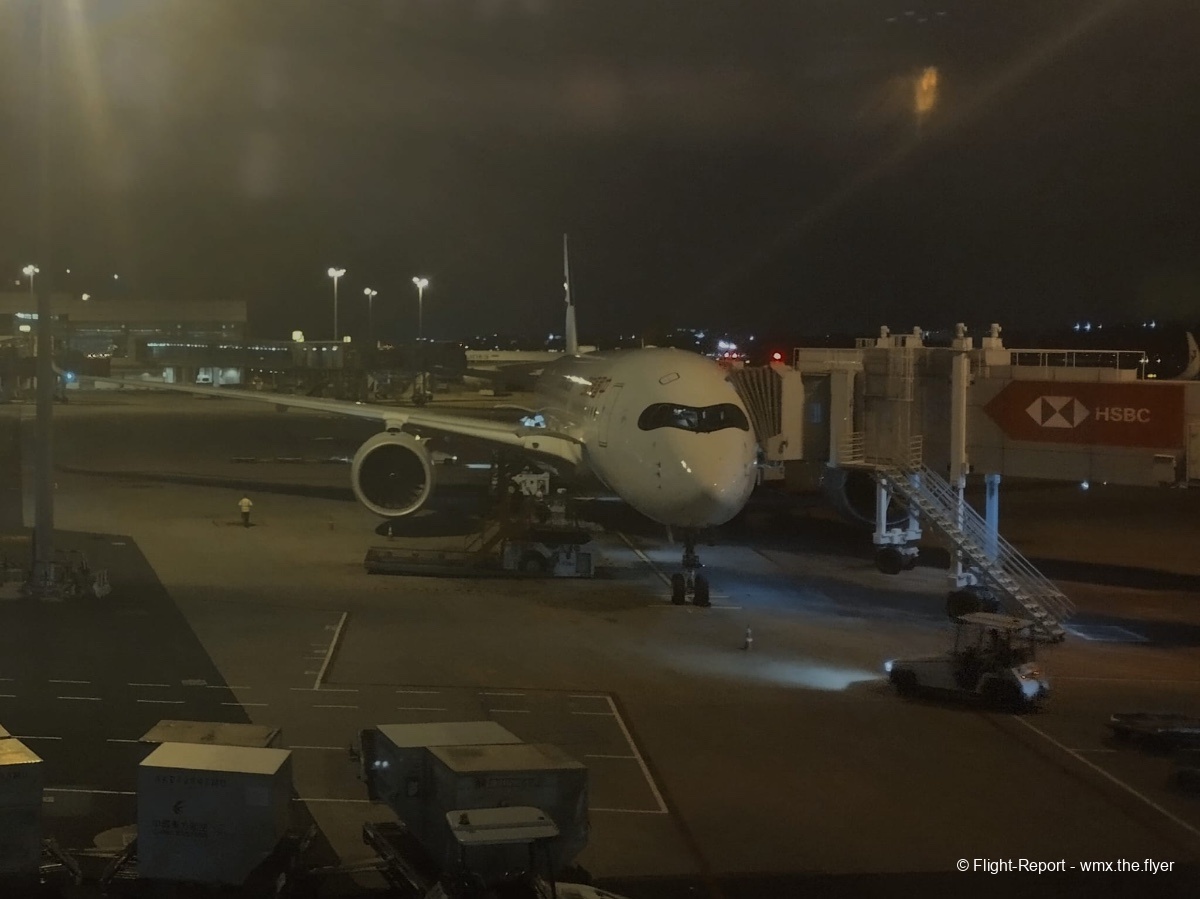
n 2019, before the COVID-19 pandemic hit, Changi Airport handled a record 68300000 passengers, which made it the 18th busiest airport in the world that year. While the pandemic took a huge toll on the passenger movement in 2020 and 2021, the airport’s passenger traffic has been on the rise again, handling 58900000 passengers in 2023, almost already back to the pre-pandemic numbers.
Immigration
The immigration hall was in relatively close proximity to our gate, so it was a very short walk there. I once again pass by this spot where I was before my SWISS A340 flight to Zurich and after my Lufthansa A340 flight from Frankfurt back in 2021.

The immigration hall is very large and spacious, and was spotlessly clean. The immigration process was quite smooth through the e-gates.
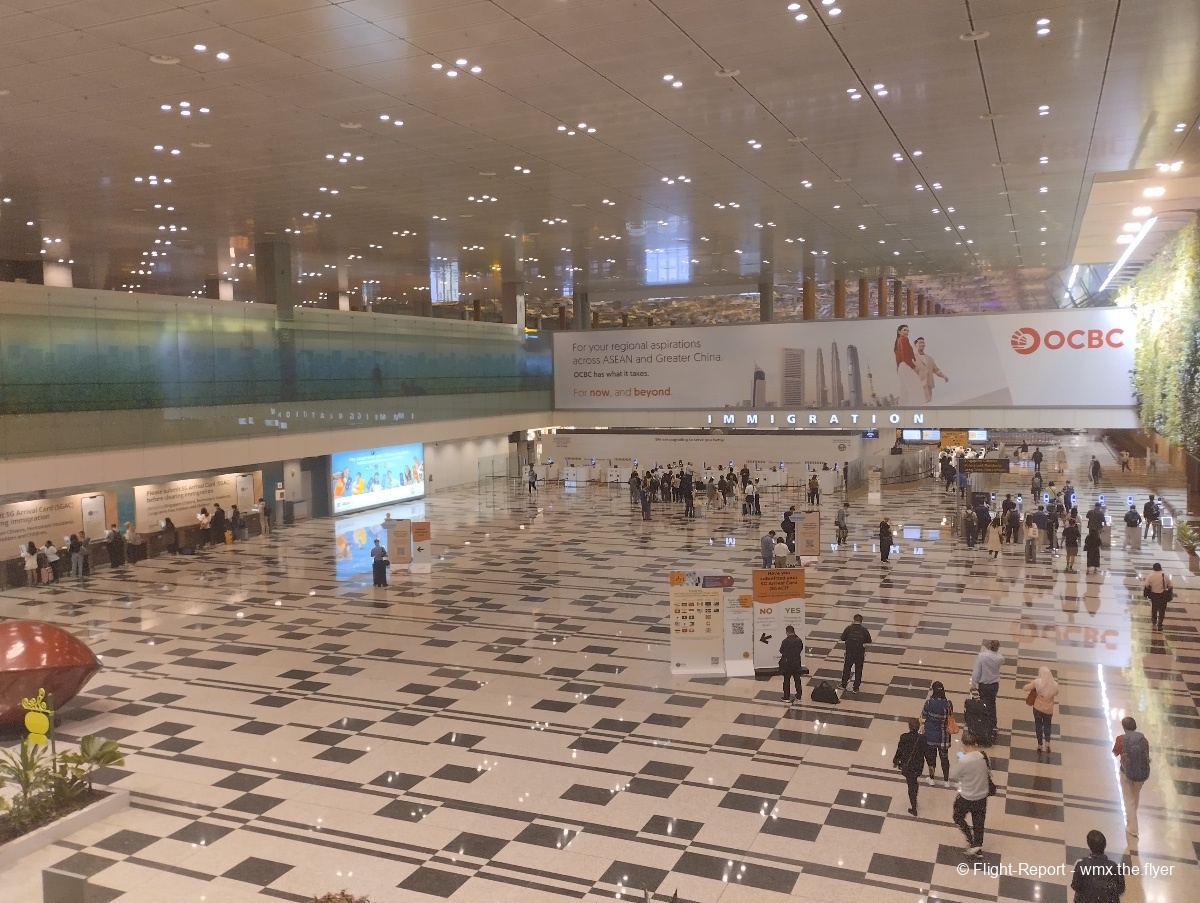
Baggage Reclaim
The baggage reclaim area was, like the rest of the airport, very clean. My checked luggage took not too long to arrive onto the belt.
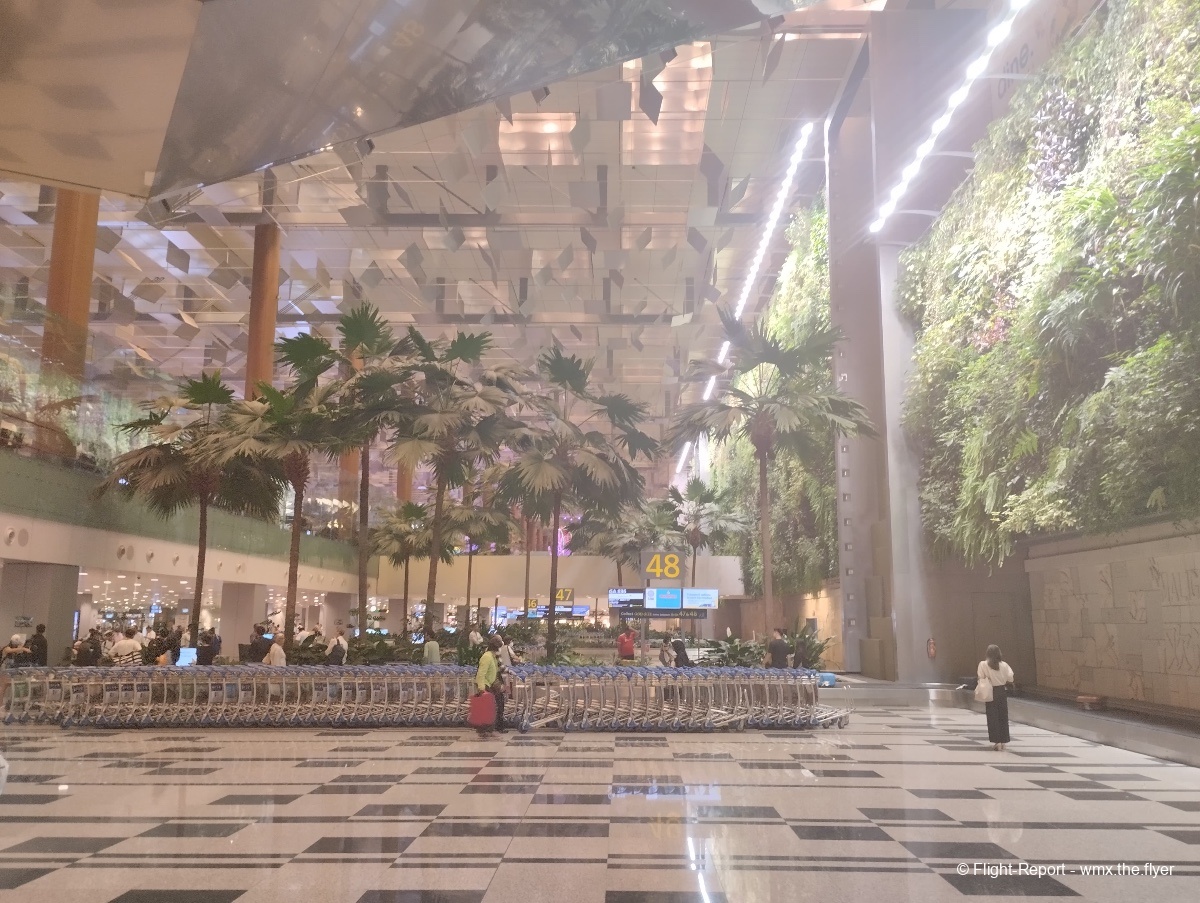
Transport to/from the Airport
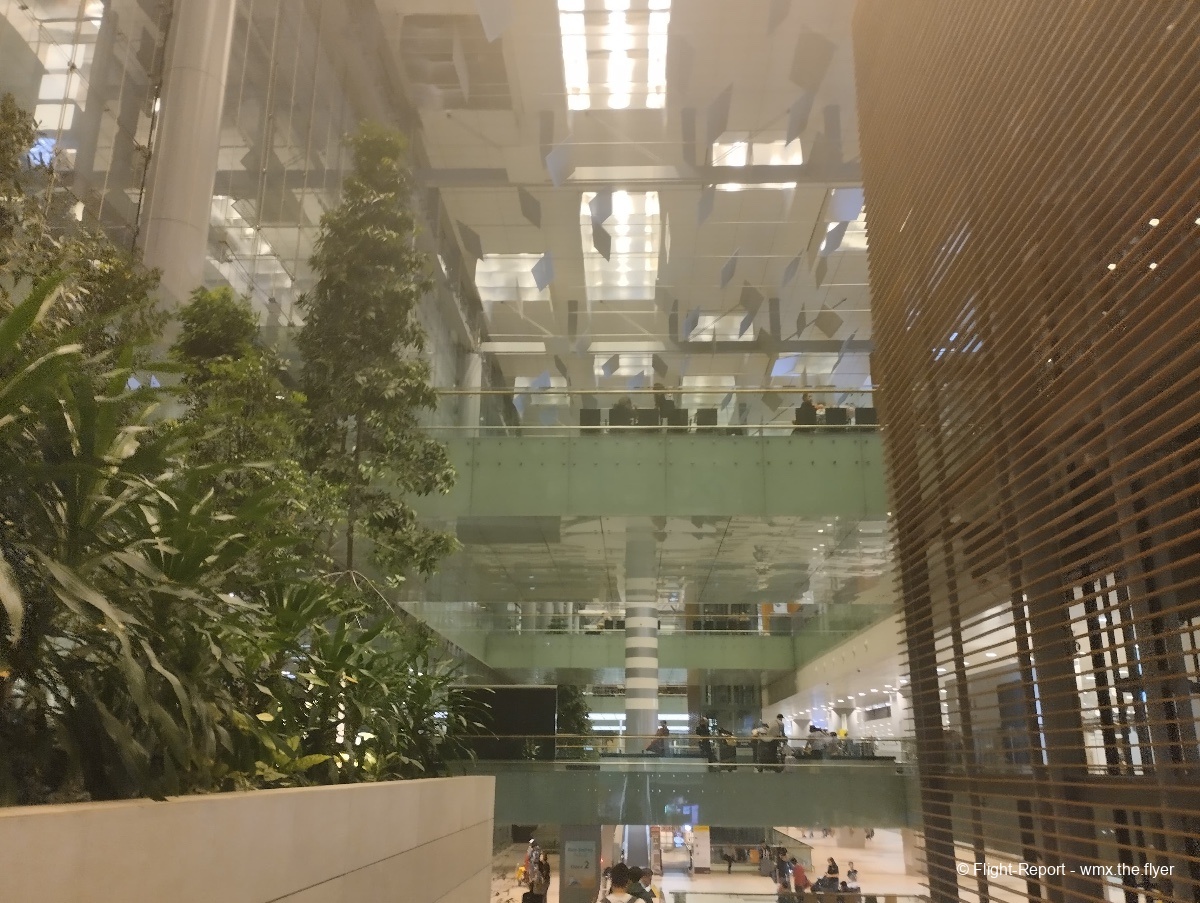
Changi Airport is well-connected to the city center and other parts of Singapore through various modes of transport. One of the most convenient ways to travel from Changi Airport is by the East-West Line (green) of the Mass Rapid Transit (MRT) system, which is the metro system of Singapore. The airport has its own MRT station, located in between Terminal 2 and Terminal 3, and accessible from Terminal 1 via the Skytrain and Terminal 4 with a bus service. The MRT provides a quick and efficient way to reach downtown Singapore and other parts of the city. For those preferring private transportation, taxis are readily available at designated taxi stands outside each terminal, and I made use of the one at Terminal 2 on this occasion. Passengers can also use ride-hailing services like Grab (Uber crashed out of Singapore in 2020 due to all the competition) to book private transportation from the airport. Additionally, Changi Airport offers a complimentary shuttle service, the Changi Airport Shuttle, which provides transfers between the airport terminals and select high-end hotels in the city centre.
ARRIVAL AIRPORT SCORES: 9/10
My final ratings
Airports
Airport Experiences: 8/10
Hard Product
Seat Comfort: 9/10
Sleep Comfort: N/A
In-flight Entertainment: 6/10
Aircraft Comfort: 9/10
Aircraft Cleanliness: 10/10
Soft Product
Lunch Service: 7/10
Amenities: 6/10
Other Service: 8/10
Cabin Crew: 8/10
OVERALL RATING: 78/100
Conclusion
So, that was a look into my economy class experience on China Eastern’s Airbus A350-900 from Shanghai Pudong to Singapore!
China Eastern does offer a very solid product in economy class, with a really good seat and decent food and service on offer. As for my expectations for this flight, I would say that they were somewhat met. While certainly pleasant, the cabin crew were more forgettable than those on the outbound flight.
Click the bonus section for some pictures from the Singapore Airshow 2024!
Flight routing
- 1
- 2MU565 - Economy - Shanghai —> Singapore - Airbus A350-900


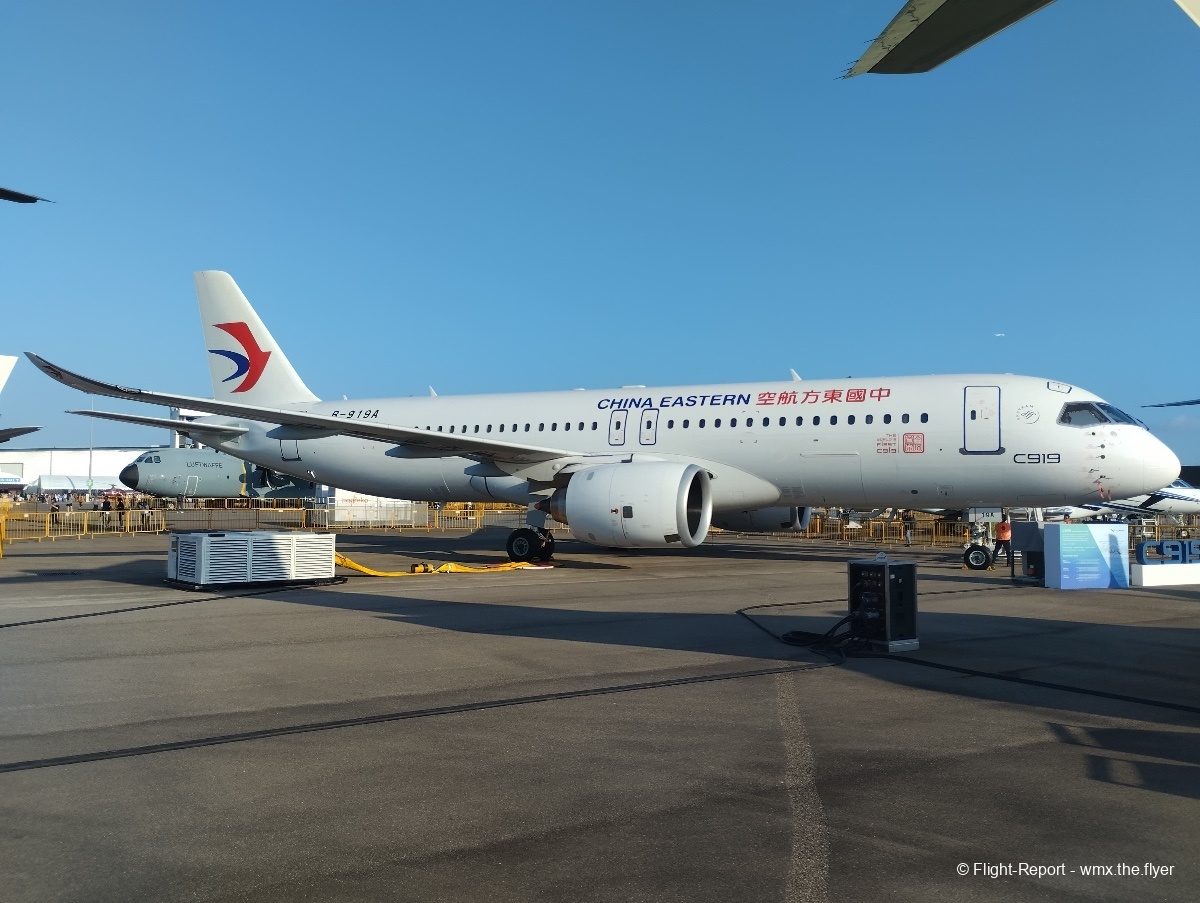
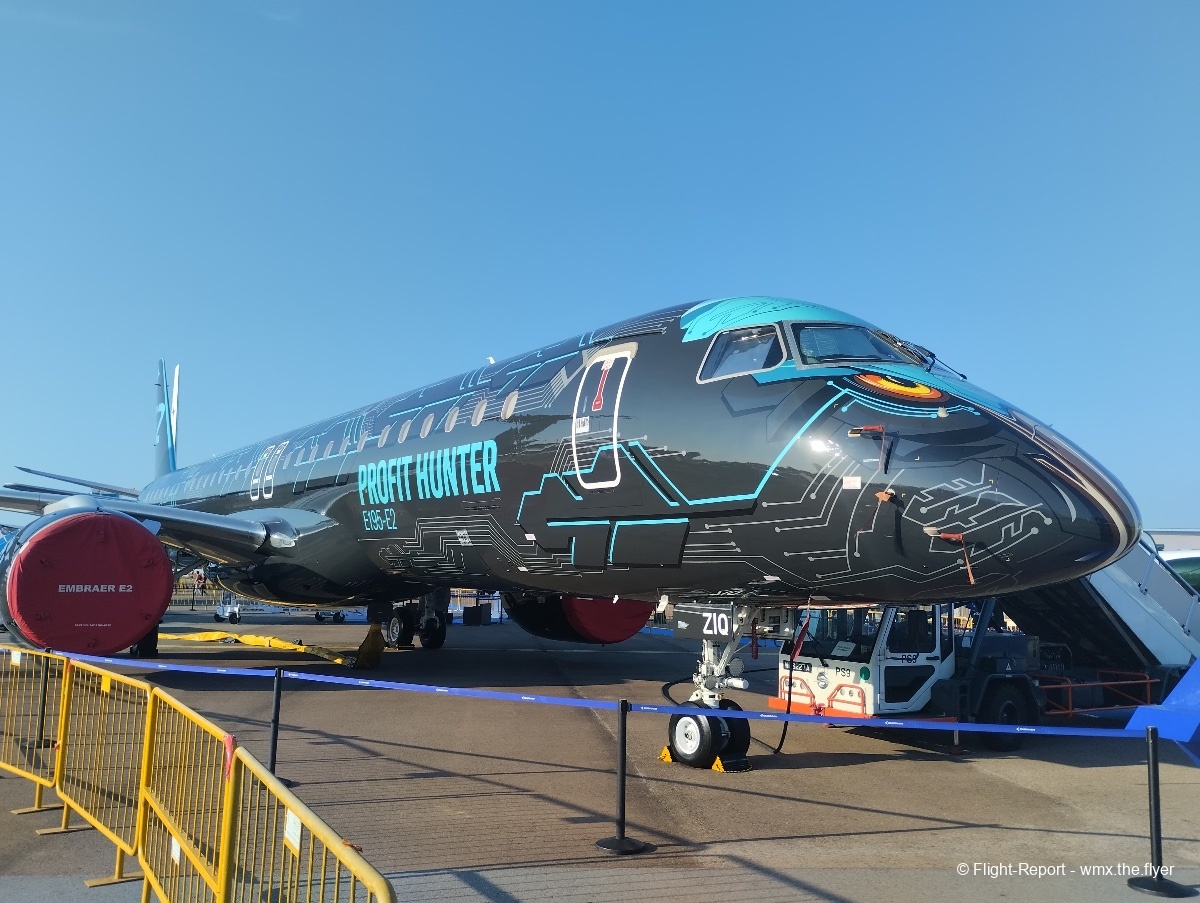
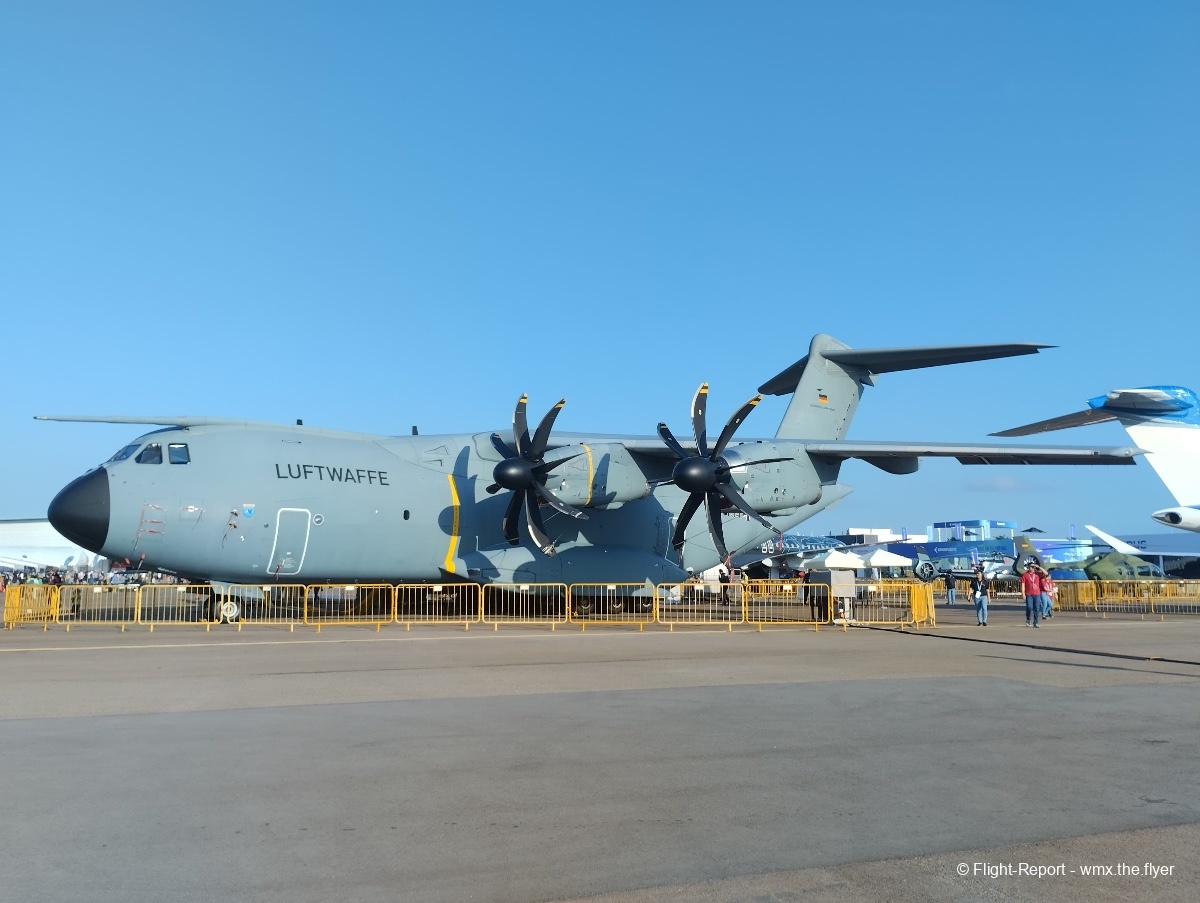


intresting flight review from shanghai with china eastern a350 900 average inflight meals despite lack of western meals then singapore airlines service as well as inflight entertainment system awith some english movies and restrictive inflight wifi with lack of acess to google or instagram unless using a vpn to acess even great onboard camera as thai airways a350 and intresting to fly out from terminal 1 of pvg airport as i more familiar when taking china eastern back in my childhood days since 2007 ,2010,2011 and 2013 other than the common route that i took mostly sin to pvg with china eastern and singapore airlines and intresting photos at the singapore airshow with a brand new c919 from china eastern since it rarely deploy but in a near future thanks again for the intresting flight report best regards pheeplanes
Hi there again, thanks for the comment! This route is certainly a very interesting one, with quite a few airlines operating multiple daily flights. Of course, when comparing MU with SQ, SQ really comes out on top overall, though MU tends to be a lot more affordable. Hopefully the C919 would get even more recognition soon and we can see them more often outside China.
Thanks for reading!
Thanks for this look at the MU A350! Overall, MU is a reasonable proposition for regional flights with decent catering and hard product (agree that the older A330s are not as nice), but certainly not going to wow anyone. They are much more competitive on TPAC routings where they are competing with low-lying fruit (US3) for non-stop services.
This can be variable. If you just miss a Maglev departure, the wait time for the next departure negates its time advantage over the subway to/from Longyang Road. It’s a more competitive option to the airport for anyone not arriving on Line 2.
Not seen this on any other carrier so maybe it was related to the weight/size of your roller suitcase?
You might also be offending some AF fans ;)
Thanks for the comment!
Have to agree with this, the departure intervals do tend to be quite long at around 15 minutes, though I would still recommend it to anyone for the experience alone?
Nope, this same suitcase has been able to make its way on any other aircraft as a carry-on, including my outbound Shanghai Airlines (pretty much the same airline) flight. Even the guy at check-in didn’t seem very convinced about this policy, saying that CES is ever closer to becoming a LCC.
Gosh I’ve never thought of that. Maybe it’s the font and the design on the tail, but AF’s new livery, while plain, has always seemed quite elegant to me, unlike CES who chose the most generic font and lazy placement.
Seems like the galleries have disappeared, leaving just the first picture from each gallery? I think it’s just a glitch, may put those galleries back soon.
I've advised our dev to have if it's a bug